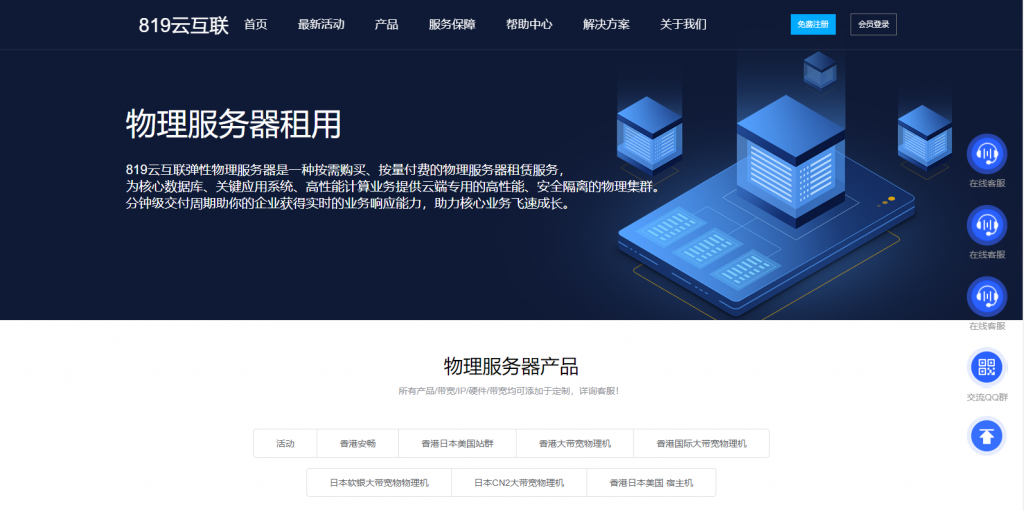uctswww.bu622.com
www.bu622.com 时间:2021-05-08 阅读:()
RESEARCHOpenAccessGrowthandfermentationofD-xylosebySaccharomycescerevisiaeexpressinganovelD-xyloseisomeraseoriginatingfromthebacteriumPrevotellaruminicolaTC2-24RonaldEHector*,BruceSDien,MichaelACottaandJeffreyAMertensAbstractBackground:SaccharomycescerevisiaestrainsexpressingD-xyloseisomerase(XI)producesomeofthehighestreportedethanolyieldsfromD-xylose.
Unfortunately,mostbacterialXIsthathavebeenexpressedinS.
cerevisiaeareeithernotfunctional,requireadditionalstrainmodification,orhavelowaffinityforD-xylose.
ThisstudyanalyzedseveralXIsfromrumenandintestinalmicroorganismstoidentifyenzymeswithimprovedpropertiesforengineeringS.
cerevisiaeforD-xylosefermentation.
Results:FourXIsoriginatingfromrumenandintestinalbacteriawereisolatedandexpressedinaS.
cerevisiaeCEN.
PK2-1CparentalstrainprimedforD-xylosemetabolismbyoverexpressionofitsnativeD-xylulokinase.
ThreeoftheXIswerefunctionalinS.
cerevisiae,basedonthestrain'sabilitytogrowinD-xylosemedium.
Themostpromisingstrain,expressingtheXIminedfromPrevotellaruminicolaTC2-24,wasfurtheradaptedforaerobicandfermentativegrowthbyserialtransfersofD-xyloseculturesunderaerobic,andfollowedbymicroaerobicconditions.
Theevolvedstrainhadaspecificgrowthrateof0.
23h-1onD-xylosemedium,whichiscomparabletothebestreportedresultsforanalogousS.
cerevisiaestrainsincludingthoseexpressingthePiromycessp.
E2XI.
WhenusedtofermentD-xylose,theadaptedstrainproduced13.
6g/Lethanolin91hwithametabolicyieldof83%oftheoretical.
FromanalysisoftheP.
ruminicolaXI,itwasdeterminedtheenzymepossessedaVmaxof0.
81μmole/min/mgproteinandaKmof34mM.
Conclusion:ThisstudyidentifiesanewxyloseisomerasefromtherumenbacteriumPrevotellaruminicolaTC2-24thathasoneofthehighestaffinitiesandspecificactivitiescomparedtootherbacterialandfungalD-xyloseisomerasesexpressedinyeast.
WhenexpressedinS.
cerevisiaeandusedtofermentD-xylose,veryhighethanolyieldwasobtained.
ThisnewXIshouldbeapromisingresourceforconstructingotherD-xylosefermentingstrains,includingindustrialyeastgeneticbackgrounds.
Keywords:Saccharomycescerevisiae,Prevotellaruminicola,Bacteroides,D-xyloseisomerase,Ethanol,Lignocellulose*Correspondence:ronald.
hector@ars.
usda.
govBioenergyResearchUnit,UnitedStatesDepartmentofAgriculture,AgriculturalResearchService,NationalCenterforAgriculturalUtilizationResearch,Peoria,IL61604,USA2013Hectoretal.
;licenseeBioMedCentralLtd.
ThisisanOpenAccessarticledistributedunderthetermsoftheCreativeCommonsAttributionLicense(http://creativecommons.
org/licenses/by/2.
0),whichpermitsunrestricteduse,distribution,andreproductioninanymedium,providedtheoriginalworkisproperlycited.
Hectoretal.
BiotechnologyforBiofuels2013,6:84http://www.
biotechnologyforbiofuels.
com/content/6/1/84BackgroundConcernregardingtherisksinclimatechangeassociatedwithgreenhousegasemissionsisdrivingpoliciespro-motinglowerCO2emissions.
IntheUnitedStates,onethirdofCO2emissionsarefromtransportationdespitetheblendingof14billiongallonsofethanoloriginatingfromgrains(e.
g.
corn)(www.
ethanolrfa.
orgaccessedFeb.
2013).
Itisexpectedthatfurthergrowthinbiofuelproductionwillneedtorelyonlignocellulosicfeedstocks.
Lignocelluloseincludesagriculturalandforestwastesaswellasdedicatedenergycrops,suchasperennialgrassesortreeplantations.
Besidesbeingavailableinlargerquan-titiesthangrains,thesefeedstocksdonotimpingeonthefoodandfeedmarket,aremoreCO2neutral,andwillnotinterferewithcurrentethanolproduction.
Severaltechnologiesarebeingdevelopedthatuselignocelluloseforproducingbiofuels.
Thebiochemicalrouteisoneofthemostadvancedintermsofdevelop-ment.
Inthisroute,carbohydratesareextracted,usuallyintheformofmonosaccharides,andfermentedtoethanol.
Whileseveraleffortsareunderwayatthepro-ductionscale,thereisacontinuedneedforfurtherstraindevelopment.
IndustrialethanolisproducedusingSaccharomycesyeast.
Saccharomycesyeastsarefavoredbecauseoftheirexcellentyield,toleranceoflowpHthatdiscour-agesthegrowthofspoilagemicrobes,abilitytogrowaerobicallyforefficientcellgeneration,androbustness.
However,plantcellwallscontainamixtureofsug-ars,includingD-xylose,whichSaccharomycesspp.
can-notconsume.
OvertwodecadesofefforthavebeenexpendedondevelopingS.
cerevisiaestainsthatfermentD-xyloseand(morerecently)L-arabinoseandresearchcontinuesinenhancingtheproductivityofD-xylosefer-mentation[1,2].
CurrentresearcheffortsarefocusedonimprovingD-xylosetransportintothecell,conversionofD-xylosetoD-xylulose,andoptimizationofthenon-oxidativepen-tosephosphatepathwaythatfeedsintoglycolysis[3,4].
Rationalstrategieshavebeensupplementedbyevolu-tionaryadaptationusingcontinuousandserialbatchcul-tures[5-7].
Thisstudyfocusesonthesecondarea.
TwostrategieshavebeenpursuedforconvertingD-xylosetoD-xylulose.
TheearliesteffortconsistedofexpressingtwogenesfromthenativeD-xylose-fermentingyeastScheffersomycesstipitis[8,9].
S.
stipitisconvertsD-xylosetoxylitolandxylitoltoD-xylulosebytheactionsofD-xylosereductaseandxylitoldehydrogen-ase.
SimpleexpressionofthegenesinS.
cerevisiaefavorsproductionofxylitoloverethanolbecausethepreferenceofthereductaseforNADPHandofthedehydrogenaseforNAD+.
Additionally,conversionofD-xylulosetoD-xylulose-5-phosphateisratelimit-ing[10].
Redoxengineeringandfine-tuningD-xylulokinaseactivityhavebeensuccessfulinreducingxylitolproduction.
MostbacteriatransformD-xylosetoD-xyluloseinasinglestepthatreliesontheenzymeD-xyloseisomerase(XI).
EffortstoexpressbacterialD-xyloseisomerasesinyeasthavebeenlargelyunsuccessful.
Abreakthroughoc-curredwhenaD-xyloseisomerasewasdiscoveredinananaerobicfungusandthisD-xyloseisomerasewassuc-cessfullyexpressedinS.
cerevisiae[11,12].
Whileinitialgrowthrateswereslow,overexpressinggenesrelatedtoD-xylosefermentationandevolutionaryadaptationcon-siderablyimproveditsperformance.
StillthisapproachisnotwithoutitsdisadvantagesstemmingfromproblemsrelatedtoexpressionofD-xyloseisomeraseandtheen-zyme'spoorkineticproperties.
Untilrecently,theD-xyloseisomerasefromtheanaerobicfungusPiromycessp.
E2wastheonlyXIgenethatfunctionedinS.
cerevisiae.
However,duetoitslowaffinityforD-xylose(Kmfrom20to90mM)[12-14],thesearchfornewD-xyloseisomerasesthatfunctioninS.
cerevisiaehascontinued.
ManyofthesenewXIsdonotconfertheabilitytogrowonD-xylosewithoutfirstmodifyingtheD-xyloseisomeraseoradaptingthehoststrain.
Forexample,ex-pressionoftheClostridiumphytofermentansXIinS.
cerevisiaewasshownintwoseparatestudiestorequirecodon-optimizationandstrainadaptation[14,15].
TheRuminococcusflavefaciensXIwasrecentlyexpressedinS.
cerevisiae.
YeaststrainsexpressingseveralversionsofthisXIfailedtogrowaerobicallyinD-xylosemedium,despiteoneoftheexpressedXIenzymeshavingahighspecificactivity[16].
TheXIgenefromananaerobicrumenfungus,Orpinomyces,wasalsoexpressedinS.
cerevisiaeandproducedahighspecificactivity(1.
73U/mglysate).
D-xyloseconsumptionwaslimitedto10g/Lin140hours[17].
However,furtherstrainmodificationbyadditionofthesugartransporterSUT1resultedin15g/LD-xyloseconsumedoverthesametimeperiod.
ThegoalofthisstudywastoidentifynovelD-xyloseisomerasesthatfunctionwhenexpressedinS.
cerevisiae.
RumenandintestinalbacteriawereusedasthesourceoftheseadditionalXIs.
Therumenandintestinalmicro-bialecosystemsarepromisingnichestominefornewXIsduetotheprevalenceofxylandegradingmicro-organismsintheseenvironments.
AD-xyloseisomerasefromtherumenbacteriumPrevotellaruminicolaTC2-24wasdiscoveredthatconferredtheabilitytogrowonD-xylosemediumwhenexpressedinS.
cerevisiaewithoutstrainadaption.
Thestrainwasfurtherimprovedbyadaptationunderaerobicandfermentativecondi-tions.
TheevolvedstrainwascomparedtoanadaptedS.
cerevisiaestrainexpressingtheD-xylosereductase(XR)andxylitoldehydrogenase(XD)genesfromScheffersomycesstipitis.
Hectoretal.
BiotechnologyforBiofuels2013,6:84Page2of12http://www.
biotechnologyforbiofuels.
com/content/6/1/84ResultsanddiscussionCloningandexpressionofbacterialD-xyloseisomerasesinSaccharomycescerevisiaePrevotellaspp.
andBacteroidesspp.
areamongthemostcommonxylan-degradingmicroorganismsisolatedfromthebovinerumenandhumancolon,representingadominantphylum(i.
e.
Bacteroidetes)intheseecosys-tems.
BacterialD-xyloseisomeraseshavebeenreportedwithmuchhigheraffinityforD-xylosewhencomparedtothefungalPiromycessp.
E2orOrpinomycesD-xyloseisomerases.
WiththegoalofidentifyingD-xyloseisom-eraseswithincreasedaffinityforD-xylose,D-xyloseisomerasegenesfromBacteroidesandPrevotellaspp.
wereisolatedandexpressedinS.
cerevisiae.
D-xyloseisomerasegeneswereisolatedfromthreeBacteroidesspp.
(B.
uniformis,B.
distasonis,andB.
ovatus)andP.
ruminicolastrainTC2-24.
AttemptstoisolateD-xyloseisomerasegenesfromotherP.
ruminicolastrainsfailed(seemethods).
SeveralPrevotellaspp.
,includingthese-quencedtypestrainP.
ruminicola23,havebeenreportedtobemissingthegeneforD-xyloseisomerase.
WhengrownonD-xylose,thesestrainshavedetectablebutlowD-xyloseisomeraseactivityandhighD-xylulokinaseac-tivity[18,19].
Yet,theylackanobviousD-xylosereduc-taseandxylitoldehydrogenasepathway.
ItisunclearwhethertheabsenceofaD-xyloseisomerasegeneisduetoanincompletegenomesequenceoriftheypossessanalternatemechanismtoconvertD-xylosetoD-xylulose.
P.
ruminicolastrainTC2-24showsmanysimilaritieswithP.
ruminicola23butdoesexhibitdifferenceswhencomparedtothistypestrain[20,21].
Althoughwehavenotinvestigatedfurther,thepresenceofaD-xyloseisomeraseinTC2-24maybeanothercharacteristicofthisgroupof"P.
ruminicola23-like"strains.
TheD-xyloseisomeraseidentifiedfromP.
ruminicolaTC2-24was439aminoacidslongand79%to85%identicaltoD-xyloseisomerasesfromotherPrevotellaspp.
TheTC2-24XIwas79%identicaltothePiromycessp.
E2andOrpinomycesXIsandonly53%identicaltotheC.
phytofermentansXI.
TheBacterodiesspp.
XIsanalyzedinthisstudywere81%to83%identicaltothefungalisomerases.
AerobicgrowthinD-xylosemediumTodetermineiftheD-xyloseisomerasegeneswerefunc-tional,eachgenewasexpressedinS.
cerevisiaealongwiththeS.
cerevisiaeD-xylulokinasegene,XKS1,andscreenedforgrowthonD-xyloseinaerobicliquidcul-ture(Figure1A).
ThecontrolstrainYRH561,whichdidnotexpressD-xylosemetabolismgenes,didnotgrow.
StrainYRH562,expressingthePiromycessp.
E2XI(andS.
cerevisiaeXKS1),wasincludedforcomparison.
YRH562hadaspecificgrowthrateof0.
07h-1onD-xylosemediumunderaerobicgrowthconditions(Table1).
SeveralofthebacterialisomerasesconveyedtheabilityforgrowthonD-xyloseatspecificgrowthratessimilartoYRH562.
Asexpected,specificactivityofaD-xyloseisomeraseintheS.
cerevisiaestrainwascorrelatedwiththegrowthofthatstrainonD-xylose(datanotshown).
Forexample,theBacteroidesovatusXIexpressedinstrainYRH565hadverylowactivityandthisstrainalsogrewpoorlyinD-xylosemedium(Figure1A).
EquilibriumkineticsoftheD-xyloseisomer-asereactiondonotfavorproductionofD-xyluloseandCellmass(OD660)ABTime(h)Cellmass(OD660)012345678024487296YRH561YRH562YRH563YRH564YRH565YRH587YRH592YRH628YRH629YRH630YRH631Time(h)0.
00.
20.
40.
60.
81.
0024487296120Figure1ComparisonofSaccharomycescerevisiaestrainsengineeredtoexpressvariousD-xyloseisomeraseandD-xylulokinasegenes.
A)StrainswereculturedunderaerobicconditionsusingYPmediumwith50g/LD-xylose.
Cultureswereincubatedat30°C,shakingat1000rpmusingaBioLector.
Celldensitywasmeasuredevery30minutes.
Datashownaremeanvaluesfromexperimentsperformedintriplicate.
B)StrainswereculturedundermicroaerobicconditionsusingYPmediumwith50g/LD-xylose.
Cultureswereincubatedat30°CusingaBioscreenC.
Celldensitywasmeasuredevery30minutes.
Datashownaretheaveragevaluesfromthreebiologicalreplicates.
Thestandarddeviationformostvalueswaslessthan5%.
PanelBusesthesamelegendasinpanelA.
Hectoretal.
BiotechnologyforBiofuels2013,6:84Page3of12http://www.
biotechnologyforbiofuels.
com/content/6/1/84co-expressionwithaD-xylulokinasehasbeenrecommendbypriorstudiestohelppullD-xyloseintothepathway.
Asevidence,strainsnotoverexpressingD-xylulokinase(YRH628inFigure1A)grewslowercomparedtostrainsexpressingelevatedlevelsofD-xylulokinase.
EndogenousXKexpressioninYRH628allowedforsomegrowthonD-xylose.
StrainYRH587,expressingtheXIfromPrevotellaruminicola(TC2-24)andScXKS1grewaswellasstrainYRH562expressingthePiromycesXIandScXKS1.
Spe-cificgrowthratesforthetwostrainswerealsocompar-able(Table1)indicatingthattheP.
ruminicolaXIwasfunctionalwhenexpressedinS.
cerevisiae.
CodonoptimizationoftheP.
ruminicolaXI(YRH629)didnotenhancegrowthrelativetoYRH587.
Additionally,theP.
ruminicolaD-xylulokinasewassubstitutedfortheScXKS1gene.
YRH631cellsexpressingthebacterialXKgenehadasimilargrowthrateastheYRH629strainex-pressingtheS.
cerevisiaeXK,indicatingthattheP.
ruminicolaXKwasalsofunctionallyexpressed.
StrainYRH630,expressingthePiromycesXIgeneandtheP.
ruminicolaXK(Figure1A),grewaswellasstrainYRH562expressingthePiromycesXIgenewiththeS.
cerevisiaeXK.
CellsexpressingtheB.
uniformisXKwiththeB.
uniformisXKreachedahighercelldensitywiththeB.
uniformisXKcomparedtothestrainexpressingtheS.
cerevisiaeXK(YRH592vs.
YRH563).
Theseresultsdem-onstratethattheB.
uniformisandP.
ruminicolaXKsareactiveinS.
cerevisiae.
Next,thestrainswereevaluatedforgrowthunderoxygen-limitedconditionsusingtheBioscreenC,ami-crotiterbasedsystemformeasuringmicrobialgrowthrates.
Aerobicgrowthstudieswereperformedusinga6-edgedflowershapedmicrotiterplateintheBioLectorunderconditionsthatwereoptimizedforhighoxygentransferrate[22].
RoundmicrotiterplatessuchasthoseusedintheBioscreenChavebeenshowntoprovideloweroxygentransferrates[22],anddecreasedoxygenlevelsarealikelycauseofthepoorcellgrowthseenwhentheBioscreenCisusedtoculturecellsonre-spiratorycarbonsourceslikeethanol[23].
AllofthestrainsgrewpoorlywhenculturedusingtheBioscreenC.
Thebeststrainsreachedacelldensityoflessthan0.
8OD660in96hours(Figure1B).
Suchpoorgrowthundertheseconditionssuggestedthatadaptationtoanoxygen-limitedenvironmentwouldbebeneficial.
AdaptationforimprovedD-xylosefermentationAdaptation,eitherbyserialbatchorcontinuouscellculture,hasbeensuccessfulforimprovinggrowthandfermentationofS.
cerevisiaestrainsexpressingdifferentD-xyloseisomerasegenes[6,14]aswellasforcellsex-pressingthereductase/dehydrogenasegenesforD-xylosemetabolism[7].
Weusedserialpassageofcellstoselectforspontaneouschangesthatresultedinincreasedgrowthunderfermentativeconditions(microaerobic).
YRH631wasgrowninYPXandtransferredweeklyforatotalofsixtransfers.
ResidualD-xyloseandthefermentationprod-uctsethanolandxylitolweremeasuredforeachculture(Figure2).
SteadystrainimprovementwasobservedasgreaterD-xyloseutilizationandincreasedproductionofethanol(Figure2).
Acetate(notshown)remainedconstantat2g/L.
TheadaptedstrainYRH1114wasisolatedfromthelastserialcultureandsubsequentlyevaluatedforgrowthinD-xylosemediumunderaerobicandmicroaerobicconditions(Figure3A,BandTable1).
StrainsexpressingthePiromycesXI(YRH562)andtheunadaptedstrainexpressingtheP.
ruminicolaXI(YRH631)wereincludedforcomparison.
Theadaptedstrain,YRH1114,showedaTable1SpecificgrowthratesforaerobicgrowthinD-xylosemediumStrainD-xyloseisomeraseD-xylulokinaseSpecificgrowthrate,μ(h-1±SD)YRH561nonenonen.
d.
aYRH562Piromycessp.
E2S.
cerevisiae0.
07±0.
002YRH563B.
uniformisS.
cerevisiae0.
07±0.
007YRH564B.
distasonisS.
cerevisiae0.
06±0.
004YRH565B.
ovatusS.
cerevisiaen.
d.
YRH587P.
ruminicolaS.
cerevisiae0.
08±0.
005YRH592B.
uniformisB.
uniformis0.
07±0.
012YRH628P.
ruminicolaoptnone0.
06±0.
004YRH629P.
ruminicolaoptS.
cerevisiae0.
07±0.
005YRH630Piromycessp.
E2P.
ruminicolaopt0.
07±0.
006YRH631P.
ruminicolaoptP.
ruminicolaopt0.
06±0.
005YRH1114P.
ruminicolaoptP.
ruminicolaopt0.
23±0.
024OptCodon-adaptedforexpressioninS.
cerevisiae.
an.
d.
:GrowthinD-xylosemediumwaspoorornotdetected.
Hectoretal.
BiotechnologyforBiofuels2013,6:84Page4of12http://www.
biotechnologyforbiofuels.
com/content/6/1/84significantincreaseingrowthunderbothculturecondi-tionscomparetotheunadaptedstrain.
ThespecificgrowthrateforYRH1114was0.
23h-1,anincreaseof3.
8-foldcomparedtotheunadaptedstrain,isamongthehighestreportedgrowthrateswhichrangefrom0.
01h-1to0.
22h-1foraS.
cerevisiaestrainexpressingD-xyloseisomerase[6,13,14,16,17,24-26].
D-xylosefermentationTheadaptedXIyeaststrain(YRH1114)wasalsoevalu-atedforitsabilitytofermentD-xylosetoethanolusingmicroaerobicconditions.
Forcomparison,theunadaptedyeaststrainexpressingtheP.
ruminicolaXIandXKwasalsoincludedintheexperiment.
Finally,YRH400,aD-xylosefermentingyeastthatexpressesthealternateD-xyloseutilizationgenes(S.
stipitisXRandXD,withelevatedScXKS1)inacommercialyeastbackgroundwasalsoincluded;thisstrainiscurrentlyourbestperformingstrainforD-xylosefermentation[27].
ProgressofthefermentationswasmonitoredbymeasuringproductionofCO2(Figure4):onemoleofCO2isproducedforeachmoleofethanol.
YRH1114outperformedthesestrainsproducing13.
6g/Lethanolwithametabolicyieldof82.
9%oftheoretical(Table2).
TheunadapatedXIyeaststrainYRH631hadamuchlowerethanoltiter(4.
1g/L)eventhoughthemetabolicyieldwasclosertothatoftheadaptedstrainYRH1114.
ThedifferenceinfinalethanolconcentrationbetweentheadaptedandunadaptedstrainaroseprimarilyfromdifferencesinD-xyloseconsump-tionrateandspecificethanolproductivity.
TheadaptedstrainhadasignificantlyhigherethanolproductivitycomparedtotheunadaptedstrainalsoexpressingtheP.
ruminicolaXI.
ThemostnotablecomparisonisbetweentheadaptedYRH1114strainandYRH400.
EventhoughYRH400hadlikewisebeenadaptedandpossessedanindustrialyeastbackground,YRH1114producednearlytwiceasmuchethanol(Table2).
ThisdifferenceisalsoapparentinlowerspecificethanolproductivityforYRH4000510152025123456Concentration(g/L)XyloseXylitolEthanolPassageNo.
Figure2AdaptationofstrainYRH631tocreatestrainYRH1114.
StrainYRH631,expressingthePrevotellaruminicolaXIandXKgeneswasculturedundermicroaerobicconditionsandpassagedeverysevendays.
RemainingD-xyloseandthefermentationproductsethanolandxylitolwasmeasuredpriortoeachpassage.
Datashownarefromoneoftworeplicates.
Cellmass(OD660)ABTime(h)Time(h)Cellmass(OD660)02468101214024487296YRH561YRH562YRH631YRH11140123456024487296120Figure3GrowthcurvesfortheadaptedSaccharomycescerevisiaestrainengineeredtoexpresstheP.
ruminicolaD-xyloseisomeraseandD-xylulokinasegenes.
A)StrainswereculturedunderaerobicconditionsinYPmediumwith50g/LD-xylose.
Cultureswereincubatedat30°C,shakingat1000rpmusingaBioLector.
Celldensitywasmeasuredevery30minutes.
Datashownaremeanvaluesfromexperimentsperformedintriplicate.
B)StrainswereculturedundermicroaerobicconditionsusingYPmediumwith50g/LD-xylose.
Cultureswereincubatedat30°CusingaBioscreenC.
Celldensitywasmeasuredevery30minutes.
Datashownaretheaveragevaluesfromthreebiologicalreplicates.
Thestandarddeviationformostvalueswaslessthan5%.
PanelBusesthesamelegendasinpanelA.
Hectoretal.
BiotechnologyforBiofuels2013,6:84Page5of12http://www.
biotechnologyforbiofuels.
com/content/6/1/84comparedtoYRH1114.
WhileYRH400consumednearlyasmuchD-xylose,itfunneledapproximately50%oftheD-xylosetotheproductionofxylitol,whichisapproxi-matelythreetimesasmuchastheXIexpressingstrains.
ThisdifferenceinxylitolproductionisreflectedinthemuchlowermetabolicethanolyieldforYRH400comparedtotheotherstrains.
MoststrainsusingtheXR/XDpathwaysufferfromlowethanolyield,althoughanadaptedstrainusingthispathwaywasrecentlyreportedtohavea79%oftheoreticalethanolyieldfromD-xylose[28].
SelectiveethanolproductionisahallmarkofXIex-pressingstrainsbecausetheisomerasestepavoidstheredoximbalanceobservedforexpressionofthegenesfromS.
stipitis.
Thisredoximbalancearisesbecauseeachenzyme(seeintroduction)favorsanalternativeelectroncarrier.
Thisimbalancehasbeenpartiallyre-lievedbyredoxengineeringoftheXRandXDenzymes[29-32].
IncreasesinethanolyieldduringD-xylosefer-mentationareseenforsomeredoxengineeredstrains,butethanolyieldsfromD-xyloseforthesestrainsarestill10%to19%lowerthantheyieldobtainedwiththeadaptedstraindescribedinthisstudy.
Thus,theadaptedstrainexpressingtheP.
ruminicolaXIandXKcomparesfavorablytoresultsreportedforotherstrainswhencul-turedonD-xylose.
ItisalsolikelytheperformanceoftheP.
ruminicolaXIcanbefurtherimprovedbyex-pressingthegeneinamorerobustyeaststrainsuchasD5A,whichwasusedforconstructingYRH400[27].
KineticparametersAsdiscussedpreviously,oneconcernwithXI-basedsys-temsispooraffinityoftheenzymeforD-xylose.
S.
cerevisiaedoesnotpossessanativeD-xylosetrans-porterandintracellularD-xyloseconcentrationsmightberatelimiting.
Therefore,itwasofinteresttomeasuretheMichaelis-MentenkineticconstantsfortheP.
ruminicolaXIincomparisontootherD-xyloseisomer-ases.
EnzymekineticparametersfortheP.
ruminicolaXIweremeasuredforthepreandpostadaptedstrains.
TheKmfortheP.
ruminicolaXIwas40mMand34mMbeforeandafteradaptation,respectively.
WhiletheKmmeasurementusinglysatefromtheadaptedstrainwasslightlylower,thisdifferencewasnotstatisticallysignificant.
TheKmfortheP.
ruminicolaXIappearstobemorefavorablethantheKmforPiromycessp.
E2XI,whichwasobservedtobe51mMinthisstudyandvar-iesconsiderablyintheliterature(Table3).
Thus,com-paredtobacterialXIsexpressedinyeast,andtomostreportedKmvaluesforthePiromycesXI,theP.
ruminicolaXIhasahigheraffinityforD-xylose.
ThemeasuredVmaxfortheunadaptedstrainwas0.
28μmole/min/mgprotein(Table3)andwasnotsignificantlydifferentfromPiromycessp.
E2XI,whichwasmeasuredat0.
25μmole/min/mgproteinwhenexpressedinourstrain.
PriorstudieshavereportedVmaxforthePiromycesXIat0.
05μmole/min/mgprotein(Table3).
Higherenzymeactivitythan0.
05μmole/min/mgforthePiromycesspE2XIhasbeenobserved,butVmaxwasnotreportedinthesestudies[12,25,26].
Fol-lowingstrainadaptation,VmaxfortheP.
ruminicolaXIincreased2.
9-foldfrom0.
28to0.
81μmole/min/mgpro-tein.
ThisincreaseprobablyreflectsahigherXIproteinconcentrationinthecelllysate,eitherfromincreasedex-pressionorstability.
TheincreaseinXIactivityfortheadaptedstrainsug-gestedthatthecopynumberoftheXIgenemayhave0510152025024487296YRH400YRH631YRH1114Time(h)CO2(mmoles)Figure4ComparisonofD-xylosefermentationusingSaccharomycescerevisiaestrainsengineeredtoexpresstheP.
ruminicolaD-xyloseisomeraseandD-xylulokinasegenesvs.
expressionoftheScheffersomycesstipitisD-xylosereductaseandxylitoldehydrogenasegenes.
FermentationswereperformedusingYPmediumwith50g/LD-xylose.
Pressurewasmeasuredevery15minutesandconvertedtommolesofCO2.
Datashownarefromasinglerepresentativefermentationfromexperimentsperformedintriplicate.
Table2FermentationproductsStrainD-xyloseconsumed[g/L]Xylitol[g/L]Glycerol[g/L]Ethanol[g/L]Sp.
Ethanolproductivity[g/gCDW/h]Ethanolyield[%Theoretical]Carbonrecovery[%]YRH40027.
9±1.
0014.
3±1.
790.
5±0.
046.
9±0.
130.
028±0.
001348.
3±1.
0795.
5±0.
06YRH63111.
7±0.
523.
0±0.
080.
8±0.
064.
1±0.
210.
015±0.
000268.
6±0.
99100.
0±0.
01YRH111432.
1±0.
454.
8±0.
131.
8±0.
1313.
6±0.
080.
041±0.
001582.
9±1.
6691.
1±0.
02Datashownrepresentthemeanfromtriplicateexperiments±SD.
Hectoretal.
BiotechnologyforBiofuels2013,6:84Page6of12http://www.
biotechnologyforbiofuels.
com/content/6/1/84increasedleadingtohigherproteinexpression.
GeneamplificationisacommonmechanismforadaptioninS.
cerevisiae[33,34]andhasbeenshowntooccurunderawiderangeofcircumstancesincludingevolutionaryen-gineeringforincreasedD-xylosemetabolism.
Forin-stance,onestudyreportedanincreaseinXIcopynumberduetointegrationofupto32copiesofthePiromycessp.
E2XIgene[6].
TodetermineiftheP.
ruminicolaXIgenehadintegratedintothegenomeinouradaptedstrain,weallowedthestraintolosetheplasmidcontainingtheXIgene.
ThestrainlackingtheXIplasmidwasnolongerabletogrowonD-xylosemedium(datanotshown),suggestingthatintegrationoftheXIgeneintothegenomedidnotoccur,atleastnotatlevelshighenoughtosupportgrowthonD-xyloseintheabsenceoftheXIexpressionvector.
TheplasmidcontainingtheXIgenewasalsorescuedfromtheadaptedstrainandsequenced.
NomutationwasfoundintheXIopenreadingframeorthepromoterortermin-atorforthegene,indicatingthatthecausativemutationforincreasedabilitytofermentD-xyloseresidesinthegenome.
Consistentwiththishypothesis,replacingtheXIvectorintheadaptedstrainwiththeoriginalparentXIvectorrestoredtheincreasedgrowthrateonD-xylose,similartotheoriginaladaptedstrain(datanotshown)whileputtingthesamevectorintotheun-adaptedCEN.
PK2-1Cparentdidnot.
Furtheranalysisofthegenomesequenceoftheadaptedstraincomparedtotheparentshouldrevealthegenomicchangesrespon-sibleforincreasedD-xylosefermentation.
ConclusionsThreeD-xyloseisomerasesoriginatingfromrumenandgastrointestinaltractbacteriaweresuccessfullyexpressedinaS.
cerevisiaestrain,asjudgedbygrowthinaerobicD-xylosecultures.
Themostpromisingstrain,expressingtheXIoriginatingfromtherumenbacteriumP.
ruminicolaTC2-24,wasadaptedinserialbatchcul-tures.
Theevolvedyeaststrain(YRH1114)hadaspecificgrowthrateof0.
23h-1onD-xyloseinaerobicculture.
Infermentativecultures,itproduced13.
6g/Lethanolin91h(0.
041g/gCDW/h)withametabolicyieldof83%.
TheP.
ruminicolaXIhadaVmaxof0.
81μmole/min/mgproteinandaKmof34mMforD-xylose.
MethodsStrains,media,andgeneralmethodsEscherichiacolistrainsDH10B,TOP10(Invitrogen;Carlsbad,CA,USA),NEB5a,andNEB10b(NewEnglandBiolabs(NEB);Ipswich,MA,USA)wereusedforroutinemaintenanceandpreparationofplasmidsandweregrowninLBmedium[35].
Microorganismsandplas-midsusedinthisstudyarelistedinTable4andTable5.
DNAwastransformedintoyeastcellsusingastandardlithiumacetatemethod[36].
Syntheticcomplete(SC)mediumconsistedof6.
7g/LDifcoyeastnitrogenbase(YNB)(UnitedStatesBiological;Marblehead,MA,USA),andwassupplementedwithaminoacidsasneces-sary[37].
SCmediumwasfiltersterilized.
YPmedium(10g/Lyeastextract,20g/Lbacto-peptone)wasautoclavedwithoutcarbohydrate.
SterileD-glucoseorD-xylosewasaddedseparately.
CloningofD-xyloseisomerasegenesforexpressioninS.
cerevisiaeBacteroidesandPrevotellastrainswereobtainedfromourinhousecollection(M.
Cotta,USDA-ARS,NCAUR,Peoria,IL,USA)andwerecultivatedanaerobicallyasde-scribedpreviously[38].
D-xyloseisomerasegenesfromBacteroidesspp.
werePCRamplifiedfromgenomicDNAusingprimerspairs#312/313,#312/314,and#315/316forstrainsV923,V975,andV601respectively(Table6).
DNAfragmentscorrespondingtotheexpectedsizeforaD-xyloseisomerasegenewereremovedfromtheagarosegel,purified,andligatedintopCR2.
1TOPOforsequencing.
EachoftheDNAfragmentsisolatedfromtheBacteroidesspp.
PCRreactionsencodedaD-xyloseisomerasegene.
EachXIgenewasclonedintotheexpressionvectorpRH167usingSpeIandSalIrestric-tionendonucleasesitesaddedtotheendoftheprimerusedforamplification.
SinceageneforD-xyloseisomerasehadnotbeenfoundinP.
ruminicola,degenerateprimers#243and#244wereusedtoamplifyanisomerasegenefromP.
ruminicolastrains.
Primer#243was32-folddegenerateand#244was64-folddegenerate.
TheseprimersweredesignedbasedonBacteroidesspp.
,andPiromycessp.
E2.
Usingtheseprimersandatouch-downPCRcycle,wewereunabletosuccessfullyamplifyaD-xyloseisom-erasegenefromanyoftheP.
ruminicolastrainstested.
Table3KineticpropertiesofthePrevotellaruminicolaD-xyloseisomerasecomparedtoreportedvaluesD-xyloseisomeraseKm(mM)VmaxbReferenceP.
ruminicolaTC2-24400.
28cThisworkP.
ruminicolaTC2-24a340.
81cThisworkPiromycessp.
E2510.
25ThisworkPiromycessp.
E220NAd[12]Piromycessp.
E2870.
05[13]Piromycessp.
E2500.
05[14]C.
phytofermentans620.
03[14]R.
flavefaciens117NA[16]R.
flavefaciense67NA[16]aAfterstrainadaption.
bμmole/min/mgprotein.
cStatisticallysignificantdifference(p=0.
002).
dNotAvailable.
eModifiedXI.
Hectoretal.
BiotechnologyforBiofuels2013,6:84Page7of12http://www.
biotechnologyforbiofuels.
com/content/6/1/84ADNAfragmentcontainingaD-xyloseisomerasegenewasisolatedwhenprimersbasedontheXIfromsequencefromPrevotellabergensis(accession#ACKS01000045.
1)wereused(#310and#311).
TheonlyP.
ruminicolastraintoyieldaD-xyloseisomerasegenebyPCRamplificationwasstrainTC2-24.
TheP.
ruminicolagenefromTC2-24(accession#KC847096)wasclonedintopRH167tocreatepRH367forexpres-sionoftheunoptimizedgeneinS.
cerevisiae.
Codon-optimizedgeneswereobtainedfromDNA2.
0(MenloPark,CA,USA)andclonedintovectorsforexpressioninS.
cerevisiae.
TheoptimizedP.
ruminicola(TC2-24)D-xyloseisomerasegenewasclonedintothehigh-copyvectorpRH167usingtherestrictionendonucleasesSpeIandSalI,creatingpRH384.
TocreatepRH385theoptimizedP.
ruminicola(T23)D-xylulokinasewasclonedintothelow-copyvectorpRH164usingthesamerestrictionendonucleases.
EachvectorcontainedthetruncatedHXT7promoterforconstitutiveexpressionoftheheterologousgene.
AerobicgrowthkineticsYeastpre-culturesweregrowntomid-logphaseinsyn-theticcompletemediumwith20g/LD-glucoseandwashedwithsterilewaterpriortoinoculation.
YPmediumsupplementedwith50g/LD-xylose(YP5X)wasusedtodetermineeachyeaststrain'sabilitytoas-similateD-xyloseaerobically.
CultureswerestartedTable4MicroorganismsusedinthisstudyStrainGenotype(description)ReferenceV601BacteroidesuniformisThisworkV923BacteroidesdistasonisThisworkV975BacteroidesovatusThisworkTC2-24Prevotellaruminicola(NRRL#B-50773)ThisworkTC27PrevotellaruminicolaThisworkD31dPrevotellaruminicolaThiswork20-63PrevotellaruminicolaThiswork20-78PrevotellaruminicolaThisworkE40aPrevotellaruminicolaThisworkE42gPrevotellaruminicolaThisworkH15aPrevotellaruminicolaThisworkH2bPrevotellaruminicolaThiswork118bPrevotellaruminicolaThiswork20-92APrevotellaruminicolaThisworkCEN.
PK2-1CS.
cerevisiaeMATaura3-52trp1-289leu2-3,112his3Δ1MAL2-8CSUC2EuroscarfYRH400D5A+integrated(KanMX4;PPGK1-XYL1-TPGK1;PADH1-XYL2-TADH1;PHXT7-XKS1-THXT7)[27]YRH561CEN.
PK2-1C[pRS414,pRS416](controlstrainwithemptyvectors)ThisworkYRH562CEN.
PK2-1C[pRH195,pRH218](lowcopyXKS1,highcopyPiromycesXI)ThisworkYRH563CEN.
PK2-1C[pRH195,pRH351](lowcopyXKS1,highcopyB.
uniformisXI)ThisworkYRH564CEN.
PK2-1C[pRH195,pRH352](lowcopyXKS1,highcopyB.
distasonisXI)ThisworkYRH565CEN.
PK2-1C[pRH195,pRH353](lowcopyXKS1,highcopyB.
ovatusXI)ThisworkYRH587CEN.
PK2-1C[pRH195,pRH367](lowcopyXKS1,highcopyP.
ruminicolaXI)ThisworkYRH592CEN.
PK2-1C[pRH351,pRH369](lowcopyB.
uniformisXK,highcopyB.
uniformisXI)ThisworkYRH628CEN.
PK2-1C[pRH384](noXKS1,highcopyP.
ruminicolaXIa)ThisworkYRH629CEN.
PK2-1C[pRH195,pRH384](lowcopyXKS1,highcopyP.
ruminicolaXIa)ThisworkYRH630CEN.
PK2-1C[pRH385,pRH218](lowcopyP.
ruminicolaXKa,highcopyPiromycesXI)ThisworkYRH631CEN.
PK2-1C[pRH385,pRH384](lowcopyP.
ruminicolaXKa,highcopyP.
ruminicolaXIa)ThisworkYRH1114YRH631adaptedforimprovedD-xylosefermentationThisworkYRH1136YRH1114withXIandXKvectors(pRH384andpRH385)evictedThisworkYRH1137YRH114withXIvector(pRH384)evicted,maintainstheP.
ruminicolaXKa[pRH385]ThisworkYRH1138YRH114withXKvector(pRH385)evicted,maintainstheP.
ruminicolaXIa[pRH384]ThisworkacodonadaptedforexpressioninS.
cerevisiae.
Hectoretal.
BiotechnologyforBiofuels2013,6:84Page8of12http://www.
biotechnologyforbiofuels.
com/content/6/1/84using6-edgedflowershapedmicrotiterplatesin800μlofYP5XatanOD660of0.
05andincubatedat30°C,mixingat1000rpmusingaBioLector(m2p-labs;Baesweiler,Germany).
TheBioLectormeasurescelldensitybyscatteredlight,whichwasmeasuredevery30minutes.
Againof20wasusedfortheexperimentstoavoidsaturationathighopticaldensities.
Atthisgain,scatteredlightunitswerelinearlyproportionaltoOD660.
Scatteredlightunitswereconvertedtoopticaldensityusingtheconversionfactor(OD660=backgroundsubtractedscatteredlightunit/22.
93).
Datashownrep-resentthemeanvaluesfromexperimentsthatwerere-peatedintriplicate.
Standarddeviationvalueswerelessthan10%ofthemean.
Specificgrowthratesforeachreplicateweredeterminedbylinearregressionofthenat-urallogtransformeddata(i.
e.
backgroundsubtractedscatteredlightunits)vs.
time.
Theslopeofthefittedlineduringexponentialgrowthwasusedasthespecificgrowthrateμ(h-1).
CellcultureusingtheBioscreenCautomatedmicro-biologygrowthcurveanalysissystem(GrowthCurvesUSA;Piscataway,NJ,USA)wasperformedusing100wellhoneycombplates.
MicrotiterplatesfortheBioscreenChavearoundgeometryunliketheflower-shapedplatesusedintheBioLector.
Plateswereshakenwithahighamplitudesettingandnormalspeedsettingfor30secondswithanintervalof60seconds.
OD660wasdeterminedbyconvertingthewidebandODvaluesfromtheBioscreenCusingtheequation(OD660=Table5PlasmidsusedinthisstudyPlasmidDescriptionReferencepRS414pBluescriptIISK+,TRP1,CEN6,ARSH4[39]pRS416pBluescriptIISK+,URA3,CEN6,ARSH4[39]pRS426pBluescriptIISK+,URA3,2μorigin[39]pJ201Genesynthesisvector(DNA2.
0)pRH164pRS414+PHXT7-MCS-THXT7[27]pRH167pRS426+PHXT7-MCS-THXT7[27]pRH195pRS414+PHXT7-S.
cerevisiaeXKS1-THXT7[27]pRH218pRS426+PHXT7-Piromycessp.
E2XI-THXT7[40]pRH325pCR2.
1TOPO+BacteroidesuniformisXIThisworkpRH326pCR2.
1TOPO+BacteroidesdistasonisXIThisworkpRH327pCR2.
1TOPO+BacteroidesovatusXIThisworkpRH351pRS426+PHXT7-BacteroidesuniformisXI-THXT7ThisworkpRH352pRS426+PHXT7-BacteroidesdistasonisXI-THXT7ThisworkpRH353pRS426+PHXT7-BacteroidesovatusXI-THXT7ThisworkpRH357pCR2.
1TOPO+PrevotellaruminicolastrainTC2-24XIThisworkpRH360pCR2.
1TOPO+BacteroidesuniformisxylB(D-xylulokinase)ThisworkpRH367pRS426+PHXT7-PrevotellaruminicolaXI-THXT7ThisworkpRH369pRS426+PHXT7-BacteroidesuniformisxylB-THXT7ThisworkpRH379pJ201+PrevotellaruminicolaTC2-24codon-adaptedXIThisworkpRH380pJ201+Prevotellaruminicola23codon-adaptedXKThisworkpRH384pRS426+PHXT7-P.
ruminicolaTC2-24codon-adaptedXI-THXT7ThisworkpRH385pRS414+PHXT7-P.
ruminicola23codon-adaptedXK-THXT7ThisworkpRH544pRS414+PHXT7-P.
ruminicola23codon-adaptedXK-THXT7rescuedfromYRH1114ThisworkpRH545pRS426+PHXT7-PruminicolaTC2-24codon-adaptedXI-THXT7rescuedfromYRH1114ThisworkForallplasmidslistedusingtheHXT7promoter,PHXT7isthetruncatedversionoftheHXT7promoterforconstitutiveexpression.
Table6DNAoligonucleotidesusedinthisstudy#Sequence2435'-TTATGGCWACAAAAGARTWTTTYCCSGG-3'2445'-CCTYAGCARTACATATTYASRATKGC-3'3105'-GCACTAGTATGGCAAAAGAGTATTTCCC-3'3115'-CCGTCGACTTACTTGCAGTAAAGTGCTACG-3'3125'-GGACTAGTATGGCTACAAAAGAGTTTTTTC-3'3135'-GCGTCGACTTAGCAGTACATATTTAGGATGG-3'3145'-GCGTCGACTTAGCAGTACATATTTACGATGG-3'3155'-GGACTAGTATGGCTTCAAAAGAGTATTTTC-3'3165'-GCGTCGACTTAGCAATACATATTTAGGATGGC-3'Restrictionendonucleasesitesareshownitalicizedandunderlined.
Startcodonsareshowninbold.
Hectoretal.
BiotechnologyforBiofuels2013,6:84Page9of12http://www.
biotechnologyforbiofuels.
com/content/6/1/841.
74OD+0.
535(OD)2-0.
749(OD)3+0.
675(OD)4,R2=0.
999).
Datashownrepresentthemeanvaluesfromtrip-licateexperiments.
StrainadaptationStrainadaptationtoaerobicconditionswasachievedbyserialpassageofcellsinYPmediumsupplementedwith50g/LofD-xyloseastheonlyenergysource.
Serialpas-sageunderaerobicconditionswascontinuedforeightweeks.
StrainadaptationforD-xylosefermentationwasthenperformedinduplicatebyweeklytransferofcellsgrownunderfermentativeconditions(microaerobic)forsixweeks.
Duringadaptationtofermentativeconditionsculturesweresampledateachpassageandanalyzedforopticaldensity,residualD-xylose,andfermentationproducts(ethanol,glycerol,xylitol,andacetate).
EnzymeassaysTotalproteinfromclarifiedcelllysateswaspreparedfrommid-logphasecellsgrowninsyntheticcompletemediumusingD-glucoseasthecarbonsource.
Cellswerecollectedbycentrifugation,washedoncewithster-ileice-coldwater,andcentrifugedagain.
Cellpelletswerestoredat80°Cforlateruse.
CellswereresuspendedinanappropriateamountofY-PERreagent(Pierce;Rockford,IL,USA)plusproteaseinhibitors(Complete,mini,EDTA-freeproteaseinhibitorcocktail,Roche;Indianapolis,IN,USA)andprocessedaccordingtothemanufacturer'sinstructions.
Proteinconcentra-tionsweredeterminedwiththeQuickStartBradfordProteinAssay(Bio-Rad;Hercules,CA,USA)againstabovineserumalbuminstandard.
D-xyloseisomeraseactivitywasassayedessentiallyasdescribedin[12].
XIassayswereperformedusingbuffercontaining100mMTris-HCl,pH7.
5,10mMMgCl2,0.
15mMNADH,2Usorbitoldehydrogenase(Roche,Mannheim,Germany),andanappropriateamountofcelllysate.
ReactionswerestartedbytheadditionofD-xylose(Sigma;St.
Louis,MO,USA)toafinalconcentra-tionof500mMandreactionsmonitoredat340nmusingaCary50BioUV-Visiblespectrophotometer(Varian;PaloAlto,CA,USA).
Specificactivity(μmole/min/mglysate)wasdeterminedusingthemolarabsorp-tioncoefficient,ε340,of6.
22mM-1cm-1forNADH.
Toensurethatthesorbitoldehydrogenasecouplingenzymewasnotsaturated,theratioofsorbitoldehydrogenaseactivitytoD-xyloseisomeraseactivitywasmaintainedat>20fortheassay.
Additionally,specificactivitiesreportedwereproportionaltotheamountoflysateaddedinadilutionseries.
Kineticparameterswerede-terminedbyvaryingtheD-xyloseconcentrationfrom5to500mM.
Eachassaywasdoneusinglysatespreparedfromthreeindependentcultures.
BatchfermentationD-xylosefermentationwasinvestigatedbyinoculating100-mlYPcultureswith50g/LD-xyloseatastartingOD660of2.
0.
CO2productionwasmonitoredcontinu-ouslyoverthecourseofthefermentationusingawire-lessgasproductionmeasurementsystem(AnkomTechnologies;Macedon,NY,USA).
Thewirelesssystemmonitorsgasproductionindirectlybymeasuringcumu-lativegaspressure;CO2productioniscalculatedusingtheidealgaslaw.
Thesystemwassettoventwhentheoverheadpressureachieved1psiandtomonitortheac-cumulatedpressureevery15min.
Exponentiallygrowingcellswereusedfortheinoculum.
Postfermentationsampleswereusedtodeterminecellbiomass(byOD660),residualsugars,andfermentationproducts(byhigh-performanceliquidchromatography,HPLC).
Allfermentationexperimentswereperformedthreetofourtimes.
Accumulativepressurevalueswereusedtocalcu-latetheamountofCO2producedduringthefermenta-tion.
CarbonrecoveriesweredeterminedusingHPLCdata.
CarbonrecoverycalculationswerebasedontotalinputcarbonfromD-xyloseandmeasured(HPLC)remainingD-xylose,alongwithfermentationproducts.
CO2amountsusedforcarbonrecoverycalculationsas-sumed1moleofCO2isproducedforevery1moleofethanol.
Specificethanolproductivity(gethanol/gcelldryweight/h)wasdeterminedusingthefinalOD660measurement(91hours)foreachbatchfermentation.
Celldryweight(CDW)wascalculatedusinganOD-to-CDWconversionfactorfortheyeaststrainCEN.
PK2-1C(CDW=0.
58g/L/OD).
TheconversionfactorwasdeterminedbydryingcellsatdifferingODtoconstantweightat100°C.
Cellswerewashedthreetimeswithdis-tilledwaterpriortodryingtoremovetraceamountsofmedium.
ODwasmeasuredusingaGeneSys10visspectrophotomerer(ThermoFisherScientificInc.
;Waltham,MA,USA).
AnalyticalmethodsExtracellularmetabolitesweremeasuredusingHPLCaspreviouslydescribed[27].
SampleswereanalyzedusingaSpectraSYSTEMliquidchromatographysystem(ThermoElectronCorporation,CA,USA)equippedwithanauto-maticsampler,columnheater,isocraticpump,refractiveindexdetector,andcomputerbasedintegratorrunningChromquestver.
2.
5software(ThermoElectronCorpor-ation).
Sampleswereinjected(20μl)ontoasugarcolumn(AminexHPX-87HColumn,300x7.
8mm,BioRadLaboratories,Inc.
)andelutedwith5mMsulfuricacidat0.
6ml/minand65°C.
StatisticalanalysesForexperimentswiththreeorgreaterbiologicalrepli-cates,probabilityanalyseswereperformedusingtheHectoretal.
BiotechnologyforBiofuels2013,6:84Page10of12http://www.
biotechnologyforbiofuels.
com/content/6/1/84Student'st-testwithatwo-taileddistributionandcom-paredtotheappropriatecontrolstrain.
Valueswithp<0.
05wereconsideredsignificantforthisstudy.
Statis-ticalanalysiswasperformedusingMicrosoftExcel.
AbbreviationsXI:D-xyloseisomerase;XK:D-xylulokinase;XR:D-xylosereductase;XD:xylitoldehydrogenase;OD:opticaldensity;HPLC:Highperformanceliquidchromatography.
CompetinginterestsREH,BSD,andMACarelistedonanationalpendingpatent(applicationnumberUS13/616,629)forthesequenceofthePrevotellaruminicolaTC2-24D-xyloseisomerasegeneandexpressionoftheXIandP.
ruminicolaXKforthepurposeofD-xylosefermentation.
Authors'contributionsREHandBSDperformedtheworkpresentedinthisstudy.
REHdesignedthestudyanddraftedthemanuscript.
BSDandJAMparticipatedindesignofthestudyandhelpeddraftthemanuscript.
MACsupervisedthework,andassistedindraftingthemanuscript.
Allauthorsreadandapprovedthefinalmanuscript.
AcknowledgmentsWethankKatherineCardandPatriciaO'Bryanfortheirexcellenttechnicalassistancethroughoutthisstudy.
DisclaimerMentionoftradenamesorcommercialproductsinthisarticleissolelyforthepurposeofprovidingscientificinformationanddoesnotimplyrecommendationorendorsementbytheUSDepartmentofAgriculture.
USDAisanequalopportunityproviderandemployer.
§ThisarticleisaUSGovernmentworkandisinthepublicdomainintheUSA.
Received:3April2013Accepted:22May2013Published:30May2013References1.
BettigaM,BengtssonO,Hahn-HgerdalB,Gorwa-GrauslundMF:ArabinoseandxylosefermentationbyrecombinantSaccharomycescerevisiaeexpressingafungalpentoseutilizationpathway.
MicrobCellFact2009,8:40.
2.
BeraAK,SedlakM,KhanA,HoNWY:Establishmentofl-arabinosefermentationinglucose/xyloseco-fermentingrecombinantSaccharomycescerevisiae424A(LNH-ST)bygeneticengineering.
ApplMicrobiolBiotechnol2010,87:1803–1811.
3.
Van-VleetJH,JeffriesTW:Yeastmetabolicengineeringforhemicellulosicethanolproduction.
CurrOpinBiotechnol2009,20:300–306.
4.
Hahn-HgerdalB,KarhumaaK,FonsecaC,Spencer-MartinsI,Gorwa-GrauslundMF:Towardsindustrialpentose-fermentingyeaststrains.
ApplMicrobiolBiotechnol2007,74:937–953.
5.
ScalcinatiG,OteroJM,Van-VleetJR,JeffriesTW,OlssonL,NielsenJ:EvolutionaryengineeringofSaccharomycescerevisiaeforefficientaerobicxyloseconsumption.
FEMSYeastRes2012,12:582–597.
6.
ZhouH,ChengJS,WangBL,FinkGR,StephanopoulosG:XyloseisomeraseoverexpressionalongwithengineeringofthepentosephosphatepathwayandevolutionaryengineeringenablerapidxyloseutilizationandethanolproductionbySaccharomycescerevisiae.
MetabEng2012,14:611–622.
7.
SondereggerM,SauerU:EvolutionaryengineeringofSaccharomycescerevisiaeforanaerobicgrowthonxylose.
ApplEnvironMicrob2003,69:1990–1998.
8.
JeffriesTW,JinYS:Metabolicengineeringforimprovedfermentationofpentosesbyyeasts.
ApplMicrobiolBiotechnol2004,63:495–509.
9.
HoNWY,ChenZ,BrainardAP:GeneticallyengineeredSaccharomycesyeastcapableofeffectivecofermentationofglucoseandxylose.
ApplEnvironMicrob1998,64:1852–1859.
10.
RichardP,ToivariMH,PenttilM:TheroleofxylulokinaseinSaccharomycescerevisiaexylulosecatabolism.
FEMSMicrobiolLett2000,190:39–43.
11.
HarhangiHR,AkhmanovaAS,EmmensR,vander-DriftC,De-LaatWT,Van-DijkenJP,JettenMS,PronkJT,OpdenCampHJ:XylosemetabolismintheanaerobicfungusPiromycessp.
strainE2followsthebacterialpathway.
ArchMicrobiol2003,180:134–141.
12.
KuyperM,HarhangiHR,StaveAK,WinklerAA,JettenMS,De-LaatWT,Den-RidderJJ,OpdenCampHJ,vanDijkenJP,PronkJT:High-levelfunctionalexpressionofafungalxyloseisomerase:thekeytoefficientethanolicfermentationofxylosebySaccharomycescerevisiaeFEMSYeastRes2003,4:69–78.
13.
LeeSM,JellisonT,AlperHS:DirectedevolutionofxyloseisomeraseforimprovedxylosecatabolismandfermentationintheyeastSaccharomycescerevisiae.
ApplEnvironMicrobiol2012,78:5708–5716.
14.
BratD,BolesE,WiedemannB:FunctionalexpressionofabacterialxyloseisomeraseinSaccharomycescerevisiae.
ApplEnvironMicrobiol2009,75:2304–2311.
15.
MaM,LiuZ,MoonJ:Geneticengineeringofinhibitor-tolerantSaccharomycescerevisiaeforimprovedxyloseutilizationinethanolproduction.
BioEnergyResearch2012,5:459–469.
16.
AelingKA,SalmonKA,LaplazaJM,LiL,HeadmanJR,HutagalungAH,PicataggioS:Co-fermentationofxyloseandcellobiosebyanengineeredSaccharomycescerevisiae.
JIndMicrobiolBiotechnol2012,39:1597–1604.
17.
MadhavanA,TamalampudiS,UshidaK,KanaiD,KatahiraS,SrivastavaA,FukudaH,BisariaVS,KondoA:XyloseisomerasefrompolycentricfungusOrpinomyces:genesequencing,cloning,andexpressioninSaccharomycescerevisiaeforbioconversionofxylosetoethanol.
ApplMicrobiolBiotechnol2009,82:1067–1078.
18.
MatteA,ForsbergCW,GibbinsAMV:EnzymesassociatedwithmetabolismofxyloseandotherpentosesbyPrevotella(Bacteroides)ruminicolastrains,SelenomonasruminantiumD,andFibrobactersuccinogenesS85.
CanJMicrobiol1992,38:370–376.
19.
DoddD,MackieRI,CannIK:Xylandegradation,ametabolicpropertysharedbyrumenandhumancolonicBacteroidetes.
MolMicrobiol2011,79:292–304.
20.
AvgustinG,WrightF,FlintHJ:GeneticdiversityandphylogeneticrelationshipsamongstrainsofPrevotella(Bacteroides)ruminicolafromtherumen.
IntJSystBacteriol1994,44:246–255.
21.
AvgustinG,WallaceRJ,FlintHJ:PhenotypicdiversityamongruminalIsolatesofPrevotellaruminicola:ProposalofPrevotellabrevissp.
nov.
,Prevotellabyantiisp.
nov.
,andPrevotellaalbensissp.
nov.
andredefinitionofPrevotellaruminicola.
InternationalJournalofSystematicBacteriology.
IntJSystBacteriol1997,47:284–288.
22.
FunkeM,DiederichsS,KensyF,MüllerC,BüchsJ:Thebaffledmicrotiterplate:Increasedoxygentransferandimprovedonlinemonitoringinsmallscalefermentations.
BiotechnolBioeng2009,103:1118–1128.
23.
WarringerJ,BlombergA:AutomatedscreeninginenvironmentalarraysallowsanalysisofquantitativephenotypicprofilesinSaccharomycescerevisiae.
Yeast2003,20:53–67.
24.
KuyperM,HartogMM,ToirkensMJ,AlmeringMJ,WinklerAA,Van-DijkenJP,PronkJT:Metabolicengineeringofaxylose-isomerase-expressingSaccharomycescerevisiaestrainforrapidanaerobicxylosefermentation.
FEMSYeastRes2005,5:399–409.
25.
KarhumaaK,GarciaSanchezR,Hahn-HgerdalB,Gorwa-GrauslundMF:Comparisonofthexylosereductase-xylitoldehydrogenaseandthexyloseisomerasepathwaysforxylosefermentationbyrecombinantSaccharomycescerevisiae.
MicrobCellFact2007,6:5.
26.
ParachinNS,Gorwa-GrauslundMF:Isolationofxyloseisomerasesbysequence-andfunction-basedscreeningfromasoilmetagenomiclibrary.
BiotechnolBiofuels2011,4:9.
27.
HectorRE,DienBS,CottaMA,QureshiN:EngineeringindustrialSaccharomycescerevisiaestrainsforxylosefermentationandcomparisonforswitchgrassconversion.
JIndMicrobiolBiotechnol2011,38:1193–1202.
28.
BeraAK,HoNW,KhanA,SedlakM:AgeneticoverhaulofSaccharomycescerevisiae424A(LNH-ST)toimprovexylosefermentation.
JIndMicrobiolBiot2011,38:617–626.
29.
JeppssonM,BengtssonO,FrankeK,LeeH,Hahn-HgerdalB,Gorwa-GrauslundMF:TheexpressionofaPichiastipitisxylosereductasemutantwithhigherKmforNADPHincreasesethanolproductionfromxyloseinrecombinantSaccharomycescerevisiae.
BiotechnolBioeng2006,93:665–673.
30.
PetschacherB,NidetzkyB:AlteringthecoenzymepreferenceofxylosereductasetofavorutilizationofNADHenhancesethanolyieldfromHectoretal.
BiotechnologyforBiofuels2013,6:84Page11of12http://www.
biotechnologyforbiofuels.
com/content/6/1/84xyloseinametabolicallyengineeredstrainofSaccharomycescerevisiae.
MicrobCellFact2008,7:9.
31.
BengtssonO,Hahn-HgerdalB,Gorwa-GrauslundMF:XylosereductasefromPichiastipitiswithalteredcoenzymepreferenceimprovesethanolicxylosefermentationbyrecombinantSaccharomycescerevisiae.
BiotechnolBiofuels2009,2:9.
32.
KrahulecS,KlimacekM,NidetzkyB:AnalysisandpredictionofthephysiologicaleffectsofalteredcoenzymespecificityinxylosereductaseandxylitoldehydrogenaseduringxylosefermentationbySaccharomycescerevisiae.
JBiotechnol2012,158:192–202.
33.
StambukBU,DunnB,AlvesSLJr,DuvalEH,SherlockG:IndustrialfuelethanolyeastscontainadaptivecopynumberchangesingenesinvolvedinvitaminB1andB6biosynthesis.
GenomeRes2009,19:2271–2278.
34.
DunhamMJ,BadraneH,FereaT,AdamsJ,BrownPO,RosenzweigF,BotsteinD:CharacteristicgenomerearrangementsinexperimentalevolutionofSaccharomycescerevisiae.
PNatlAcadSciUSA2002,99:16144–16149.
35.
SambrookJ,RussellDW:MolecularCloning:ALaboratoryManual.
3rdedition.
ColdSpringHarbor,NY:ColdSpringHarborLaboratoryPress;2001.
36.
GietzD,WoodsRA:Transformationofyeastsbythelithiumacetate/single-strandedcarrier/polyethyleneglycolmethod.
MethodsEnzymol2002,350:87–96.
37.
AmbergBC,BurkeDJ,StrathernJN:MethodsinYeastGenetics:AColdSpringHarborLaboratoryCourseManual.
2005thedition.
ColdSpringHarbor,NY:ColdSpringHarborLaboratoryPress;2005.
38.
WhiteheadTR,CottaMA,CollinsMD,FalsenE,LawsonPA:Bacteroidescoprosuissp.
nov.
,isolatedfromswine-manurestoragepits.
IntJSystEvolMicrobiol2005,55:2515–2518.
39.
ChristiansonTW,SikorskiRS,DanteM,SheroJH,HieterP:Multifunctionalyeasthigh-copy-numbershuttlevectors.
Gene1992,110:119–122.
40.
HectorRE,MertensJA,BowmanMJ,NicholsNN,CottaMA,HughesSR:Saccharomycescerevisiaeengineeredforxylosemetabolismrequiresgluconeogenesisandtheoxidativebranchofthepentosephosphatepathwayforaerobicxyloseassimilation.
Yeast2011,28:645–660.
doi:10.
1186/1754-6834-6-84Citethisarticleas:Hectoretal.
:GrowthandfermentationofD-xylosebySaccharomycescerevisiaeexpressinganovelD-xyloseisomeraseoriginatingfromthebacteriumPrevotellaruminicolaTC2-24.
BiotechnologyforBiofuels20136:84.
SubmityournextmanuscripttoBioMedCentralandtakefulladvantageof:ConvenientonlinesubmissionThoroughpeerreviewNospaceconstraintsorcolorgurechargesImmediatepublicationonacceptanceInclusioninPubMed,CAS,ScopusandGoogleScholarResearchwhichisfreelyavailableforredistributionSubmityourmanuscriptatwww.
biomedcentral.
com/submitHectoretal.
BiotechnologyforBiofuels2013,6:84Page12of12http://www.
biotechnologyforbiofuels.
com/content/6/1/84
Unfortunately,mostbacterialXIsthathavebeenexpressedinS.
cerevisiaeareeithernotfunctional,requireadditionalstrainmodification,orhavelowaffinityforD-xylose.
ThisstudyanalyzedseveralXIsfromrumenandintestinalmicroorganismstoidentifyenzymeswithimprovedpropertiesforengineeringS.
cerevisiaeforD-xylosefermentation.
Results:FourXIsoriginatingfromrumenandintestinalbacteriawereisolatedandexpressedinaS.
cerevisiaeCEN.
PK2-1CparentalstrainprimedforD-xylosemetabolismbyoverexpressionofitsnativeD-xylulokinase.
ThreeoftheXIswerefunctionalinS.
cerevisiae,basedonthestrain'sabilitytogrowinD-xylosemedium.
Themostpromisingstrain,expressingtheXIminedfromPrevotellaruminicolaTC2-24,wasfurtheradaptedforaerobicandfermentativegrowthbyserialtransfersofD-xyloseculturesunderaerobic,andfollowedbymicroaerobicconditions.
Theevolvedstrainhadaspecificgrowthrateof0.
23h-1onD-xylosemedium,whichiscomparabletothebestreportedresultsforanalogousS.
cerevisiaestrainsincludingthoseexpressingthePiromycessp.
E2XI.
WhenusedtofermentD-xylose,theadaptedstrainproduced13.
6g/Lethanolin91hwithametabolicyieldof83%oftheoretical.
FromanalysisoftheP.
ruminicolaXI,itwasdeterminedtheenzymepossessedaVmaxof0.
81μmole/min/mgproteinandaKmof34mM.
Conclusion:ThisstudyidentifiesanewxyloseisomerasefromtherumenbacteriumPrevotellaruminicolaTC2-24thathasoneofthehighestaffinitiesandspecificactivitiescomparedtootherbacterialandfungalD-xyloseisomerasesexpressedinyeast.
WhenexpressedinS.
cerevisiaeandusedtofermentD-xylose,veryhighethanolyieldwasobtained.
ThisnewXIshouldbeapromisingresourceforconstructingotherD-xylosefermentingstrains,includingindustrialyeastgeneticbackgrounds.
Keywords:Saccharomycescerevisiae,Prevotellaruminicola,Bacteroides,D-xyloseisomerase,Ethanol,Lignocellulose*Correspondence:ronald.
hector@ars.
usda.
govBioenergyResearchUnit,UnitedStatesDepartmentofAgriculture,AgriculturalResearchService,NationalCenterforAgriculturalUtilizationResearch,Peoria,IL61604,USA2013Hectoretal.
;licenseeBioMedCentralLtd.
ThisisanOpenAccessarticledistributedunderthetermsoftheCreativeCommonsAttributionLicense(http://creativecommons.
org/licenses/by/2.
0),whichpermitsunrestricteduse,distribution,andreproductioninanymedium,providedtheoriginalworkisproperlycited.
Hectoretal.
BiotechnologyforBiofuels2013,6:84http://www.
biotechnologyforbiofuels.
com/content/6/1/84BackgroundConcernregardingtherisksinclimatechangeassociatedwithgreenhousegasemissionsisdrivingpoliciespro-motinglowerCO2emissions.
IntheUnitedStates,onethirdofCO2emissionsarefromtransportationdespitetheblendingof14billiongallonsofethanoloriginatingfromgrains(e.
g.
corn)(www.
ethanolrfa.
orgaccessedFeb.
2013).
Itisexpectedthatfurthergrowthinbiofuelproductionwillneedtorelyonlignocellulosicfeedstocks.
Lignocelluloseincludesagriculturalandforestwastesaswellasdedicatedenergycrops,suchasperennialgrassesortreeplantations.
Besidesbeingavailableinlargerquan-titiesthangrains,thesefeedstocksdonotimpingeonthefoodandfeedmarket,aremoreCO2neutral,andwillnotinterferewithcurrentethanolproduction.
Severaltechnologiesarebeingdevelopedthatuselignocelluloseforproducingbiofuels.
Thebiochemicalrouteisoneofthemostadvancedintermsofdevelop-ment.
Inthisroute,carbohydratesareextracted,usuallyintheformofmonosaccharides,andfermentedtoethanol.
Whileseveraleffortsareunderwayatthepro-ductionscale,thereisacontinuedneedforfurtherstraindevelopment.
IndustrialethanolisproducedusingSaccharomycesyeast.
Saccharomycesyeastsarefavoredbecauseoftheirexcellentyield,toleranceoflowpHthatdiscour-agesthegrowthofspoilagemicrobes,abilitytogrowaerobicallyforefficientcellgeneration,androbustness.
However,plantcellwallscontainamixtureofsug-ars,includingD-xylose,whichSaccharomycesspp.
can-notconsume.
OvertwodecadesofefforthavebeenexpendedondevelopingS.
cerevisiaestainsthatfermentD-xyloseand(morerecently)L-arabinoseandresearchcontinuesinenhancingtheproductivityofD-xylosefer-mentation[1,2].
CurrentresearcheffortsarefocusedonimprovingD-xylosetransportintothecell,conversionofD-xylosetoD-xylulose,andoptimizationofthenon-oxidativepen-tosephosphatepathwaythatfeedsintoglycolysis[3,4].
Rationalstrategieshavebeensupplementedbyevolu-tionaryadaptationusingcontinuousandserialbatchcul-tures[5-7].
Thisstudyfocusesonthesecondarea.
TwostrategieshavebeenpursuedforconvertingD-xylosetoD-xylulose.
TheearliesteffortconsistedofexpressingtwogenesfromthenativeD-xylose-fermentingyeastScheffersomycesstipitis[8,9].
S.
stipitisconvertsD-xylosetoxylitolandxylitoltoD-xylulosebytheactionsofD-xylosereductaseandxylitoldehydrogen-ase.
SimpleexpressionofthegenesinS.
cerevisiaefavorsproductionofxylitoloverethanolbecausethepreferenceofthereductaseforNADPHandofthedehydrogenaseforNAD+.
Additionally,conversionofD-xylulosetoD-xylulose-5-phosphateisratelimit-ing[10].
Redoxengineeringandfine-tuningD-xylulokinaseactivityhavebeensuccessfulinreducingxylitolproduction.
MostbacteriatransformD-xylosetoD-xyluloseinasinglestepthatreliesontheenzymeD-xyloseisomerase(XI).
EffortstoexpressbacterialD-xyloseisomerasesinyeasthavebeenlargelyunsuccessful.
Abreakthroughoc-curredwhenaD-xyloseisomerasewasdiscoveredinananaerobicfungusandthisD-xyloseisomerasewassuc-cessfullyexpressedinS.
cerevisiae[11,12].
Whileinitialgrowthrateswereslow,overexpressinggenesrelatedtoD-xylosefermentationandevolutionaryadaptationcon-siderablyimproveditsperformance.
StillthisapproachisnotwithoutitsdisadvantagesstemmingfromproblemsrelatedtoexpressionofD-xyloseisomeraseandtheen-zyme'spoorkineticproperties.
Untilrecently,theD-xyloseisomerasefromtheanaerobicfungusPiromycessp.
E2wastheonlyXIgenethatfunctionedinS.
cerevisiae.
However,duetoitslowaffinityforD-xylose(Kmfrom20to90mM)[12-14],thesearchfornewD-xyloseisomerasesthatfunctioninS.
cerevisiaehascontinued.
ManyofthesenewXIsdonotconfertheabilitytogrowonD-xylosewithoutfirstmodifyingtheD-xyloseisomeraseoradaptingthehoststrain.
Forexample,ex-pressionoftheClostridiumphytofermentansXIinS.
cerevisiaewasshownintwoseparatestudiestorequirecodon-optimizationandstrainadaptation[14,15].
TheRuminococcusflavefaciensXIwasrecentlyexpressedinS.
cerevisiae.
YeaststrainsexpressingseveralversionsofthisXIfailedtogrowaerobicallyinD-xylosemedium,despiteoneoftheexpressedXIenzymeshavingahighspecificactivity[16].
TheXIgenefromananaerobicrumenfungus,Orpinomyces,wasalsoexpressedinS.
cerevisiaeandproducedahighspecificactivity(1.
73U/mglysate).
D-xyloseconsumptionwaslimitedto10g/Lin140hours[17].
However,furtherstrainmodificationbyadditionofthesugartransporterSUT1resultedin15g/LD-xyloseconsumedoverthesametimeperiod.
ThegoalofthisstudywastoidentifynovelD-xyloseisomerasesthatfunctionwhenexpressedinS.
cerevisiae.
RumenandintestinalbacteriawereusedasthesourceoftheseadditionalXIs.
Therumenandintestinalmicro-bialecosystemsarepromisingnichestominefornewXIsduetotheprevalenceofxylandegradingmicro-organismsintheseenvironments.
AD-xyloseisomerasefromtherumenbacteriumPrevotellaruminicolaTC2-24wasdiscoveredthatconferredtheabilitytogrowonD-xylosemediumwhenexpressedinS.
cerevisiaewithoutstrainadaption.
Thestrainwasfurtherimprovedbyadaptationunderaerobicandfermentativecondi-tions.
TheevolvedstrainwascomparedtoanadaptedS.
cerevisiaestrainexpressingtheD-xylosereductase(XR)andxylitoldehydrogenase(XD)genesfromScheffersomycesstipitis.
Hectoretal.
BiotechnologyforBiofuels2013,6:84Page2of12http://www.
biotechnologyforbiofuels.
com/content/6/1/84ResultsanddiscussionCloningandexpressionofbacterialD-xyloseisomerasesinSaccharomycescerevisiaePrevotellaspp.
andBacteroidesspp.
areamongthemostcommonxylan-degradingmicroorganismsisolatedfromthebovinerumenandhumancolon,representingadominantphylum(i.
e.
Bacteroidetes)intheseecosys-tems.
BacterialD-xyloseisomeraseshavebeenreportedwithmuchhigheraffinityforD-xylosewhencomparedtothefungalPiromycessp.
E2orOrpinomycesD-xyloseisomerases.
WiththegoalofidentifyingD-xyloseisom-eraseswithincreasedaffinityforD-xylose,D-xyloseisomerasegenesfromBacteroidesandPrevotellaspp.
wereisolatedandexpressedinS.
cerevisiae.
D-xyloseisomerasegeneswereisolatedfromthreeBacteroidesspp.
(B.
uniformis,B.
distasonis,andB.
ovatus)andP.
ruminicolastrainTC2-24.
AttemptstoisolateD-xyloseisomerasegenesfromotherP.
ruminicolastrainsfailed(seemethods).
SeveralPrevotellaspp.
,includingthese-quencedtypestrainP.
ruminicola23,havebeenreportedtobemissingthegeneforD-xyloseisomerase.
WhengrownonD-xylose,thesestrainshavedetectablebutlowD-xyloseisomeraseactivityandhighD-xylulokinaseac-tivity[18,19].
Yet,theylackanobviousD-xylosereduc-taseandxylitoldehydrogenasepathway.
ItisunclearwhethertheabsenceofaD-xyloseisomerasegeneisduetoanincompletegenomesequenceoriftheypossessanalternatemechanismtoconvertD-xylosetoD-xylulose.
P.
ruminicolastrainTC2-24showsmanysimilaritieswithP.
ruminicola23butdoesexhibitdifferenceswhencomparedtothistypestrain[20,21].
Althoughwehavenotinvestigatedfurther,thepresenceofaD-xyloseisomeraseinTC2-24maybeanothercharacteristicofthisgroupof"P.
ruminicola23-like"strains.
TheD-xyloseisomeraseidentifiedfromP.
ruminicolaTC2-24was439aminoacidslongand79%to85%identicaltoD-xyloseisomerasesfromotherPrevotellaspp.
TheTC2-24XIwas79%identicaltothePiromycessp.
E2andOrpinomycesXIsandonly53%identicaltotheC.
phytofermentansXI.
TheBacterodiesspp.
XIsanalyzedinthisstudywere81%to83%identicaltothefungalisomerases.
AerobicgrowthinD-xylosemediumTodetermineiftheD-xyloseisomerasegeneswerefunc-tional,eachgenewasexpressedinS.
cerevisiaealongwiththeS.
cerevisiaeD-xylulokinasegene,XKS1,andscreenedforgrowthonD-xyloseinaerobicliquidcul-ture(Figure1A).
ThecontrolstrainYRH561,whichdidnotexpressD-xylosemetabolismgenes,didnotgrow.
StrainYRH562,expressingthePiromycessp.
E2XI(andS.
cerevisiaeXKS1),wasincludedforcomparison.
YRH562hadaspecificgrowthrateof0.
07h-1onD-xylosemediumunderaerobicgrowthconditions(Table1).
SeveralofthebacterialisomerasesconveyedtheabilityforgrowthonD-xyloseatspecificgrowthratessimilartoYRH562.
Asexpected,specificactivityofaD-xyloseisomeraseintheS.
cerevisiaestrainwascorrelatedwiththegrowthofthatstrainonD-xylose(datanotshown).
Forexample,theBacteroidesovatusXIexpressedinstrainYRH565hadverylowactivityandthisstrainalsogrewpoorlyinD-xylosemedium(Figure1A).
EquilibriumkineticsoftheD-xyloseisomer-asereactiondonotfavorproductionofD-xyluloseandCellmass(OD660)ABTime(h)Cellmass(OD660)012345678024487296YRH561YRH562YRH563YRH564YRH565YRH587YRH592YRH628YRH629YRH630YRH631Time(h)0.
00.
20.
40.
60.
81.
0024487296120Figure1ComparisonofSaccharomycescerevisiaestrainsengineeredtoexpressvariousD-xyloseisomeraseandD-xylulokinasegenes.
A)StrainswereculturedunderaerobicconditionsusingYPmediumwith50g/LD-xylose.
Cultureswereincubatedat30°C,shakingat1000rpmusingaBioLector.
Celldensitywasmeasuredevery30minutes.
Datashownaremeanvaluesfromexperimentsperformedintriplicate.
B)StrainswereculturedundermicroaerobicconditionsusingYPmediumwith50g/LD-xylose.
Cultureswereincubatedat30°CusingaBioscreenC.
Celldensitywasmeasuredevery30minutes.
Datashownaretheaveragevaluesfromthreebiologicalreplicates.
Thestandarddeviationformostvalueswaslessthan5%.
PanelBusesthesamelegendasinpanelA.
Hectoretal.
BiotechnologyforBiofuels2013,6:84Page3of12http://www.
biotechnologyforbiofuels.
com/content/6/1/84co-expressionwithaD-xylulokinasehasbeenrecommendbypriorstudiestohelppullD-xyloseintothepathway.
Asevidence,strainsnotoverexpressingD-xylulokinase(YRH628inFigure1A)grewslowercomparedtostrainsexpressingelevatedlevelsofD-xylulokinase.
EndogenousXKexpressioninYRH628allowedforsomegrowthonD-xylose.
StrainYRH587,expressingtheXIfromPrevotellaruminicola(TC2-24)andScXKS1grewaswellasstrainYRH562expressingthePiromycesXIandScXKS1.
Spe-cificgrowthratesforthetwostrainswerealsocompar-able(Table1)indicatingthattheP.
ruminicolaXIwasfunctionalwhenexpressedinS.
cerevisiae.
CodonoptimizationoftheP.
ruminicolaXI(YRH629)didnotenhancegrowthrelativetoYRH587.
Additionally,theP.
ruminicolaD-xylulokinasewassubstitutedfortheScXKS1gene.
YRH631cellsexpressingthebacterialXKgenehadasimilargrowthrateastheYRH629strainex-pressingtheS.
cerevisiaeXK,indicatingthattheP.
ruminicolaXKwasalsofunctionallyexpressed.
StrainYRH630,expressingthePiromycesXIgeneandtheP.
ruminicolaXK(Figure1A),grewaswellasstrainYRH562expressingthePiromycesXIgenewiththeS.
cerevisiaeXK.
CellsexpressingtheB.
uniformisXKwiththeB.
uniformisXKreachedahighercelldensitywiththeB.
uniformisXKcomparedtothestrainexpressingtheS.
cerevisiaeXK(YRH592vs.
YRH563).
Theseresultsdem-onstratethattheB.
uniformisandP.
ruminicolaXKsareactiveinS.
cerevisiae.
Next,thestrainswereevaluatedforgrowthunderoxygen-limitedconditionsusingtheBioscreenC,ami-crotiterbasedsystemformeasuringmicrobialgrowthrates.
Aerobicgrowthstudieswereperformedusinga6-edgedflowershapedmicrotiterplateintheBioLectorunderconditionsthatwereoptimizedforhighoxygentransferrate[22].
RoundmicrotiterplatessuchasthoseusedintheBioscreenChavebeenshowntoprovideloweroxygentransferrates[22],anddecreasedoxygenlevelsarealikelycauseofthepoorcellgrowthseenwhentheBioscreenCisusedtoculturecellsonre-spiratorycarbonsourceslikeethanol[23].
AllofthestrainsgrewpoorlywhenculturedusingtheBioscreenC.
Thebeststrainsreachedacelldensityoflessthan0.
8OD660in96hours(Figure1B).
Suchpoorgrowthundertheseconditionssuggestedthatadaptationtoanoxygen-limitedenvironmentwouldbebeneficial.
AdaptationforimprovedD-xylosefermentationAdaptation,eitherbyserialbatchorcontinuouscellculture,hasbeensuccessfulforimprovinggrowthandfermentationofS.
cerevisiaestrainsexpressingdifferentD-xyloseisomerasegenes[6,14]aswellasforcellsex-pressingthereductase/dehydrogenasegenesforD-xylosemetabolism[7].
Weusedserialpassageofcellstoselectforspontaneouschangesthatresultedinincreasedgrowthunderfermentativeconditions(microaerobic).
YRH631wasgrowninYPXandtransferredweeklyforatotalofsixtransfers.
ResidualD-xyloseandthefermentationprod-uctsethanolandxylitolweremeasuredforeachculture(Figure2).
SteadystrainimprovementwasobservedasgreaterD-xyloseutilizationandincreasedproductionofethanol(Figure2).
Acetate(notshown)remainedconstantat2g/L.
TheadaptedstrainYRH1114wasisolatedfromthelastserialcultureandsubsequentlyevaluatedforgrowthinD-xylosemediumunderaerobicandmicroaerobicconditions(Figure3A,BandTable1).
StrainsexpressingthePiromycesXI(YRH562)andtheunadaptedstrainexpressingtheP.
ruminicolaXI(YRH631)wereincludedforcomparison.
Theadaptedstrain,YRH1114,showedaTable1SpecificgrowthratesforaerobicgrowthinD-xylosemediumStrainD-xyloseisomeraseD-xylulokinaseSpecificgrowthrate,μ(h-1±SD)YRH561nonenonen.
d.
aYRH562Piromycessp.
E2S.
cerevisiae0.
07±0.
002YRH563B.
uniformisS.
cerevisiae0.
07±0.
007YRH564B.
distasonisS.
cerevisiae0.
06±0.
004YRH565B.
ovatusS.
cerevisiaen.
d.
YRH587P.
ruminicolaS.
cerevisiae0.
08±0.
005YRH592B.
uniformisB.
uniformis0.
07±0.
012YRH628P.
ruminicolaoptnone0.
06±0.
004YRH629P.
ruminicolaoptS.
cerevisiae0.
07±0.
005YRH630Piromycessp.
E2P.
ruminicolaopt0.
07±0.
006YRH631P.
ruminicolaoptP.
ruminicolaopt0.
06±0.
005YRH1114P.
ruminicolaoptP.
ruminicolaopt0.
23±0.
024OptCodon-adaptedforexpressioninS.
cerevisiae.
an.
d.
:GrowthinD-xylosemediumwaspoorornotdetected.
Hectoretal.
BiotechnologyforBiofuels2013,6:84Page4of12http://www.
biotechnologyforbiofuels.
com/content/6/1/84significantincreaseingrowthunderbothculturecondi-tionscomparetotheunadaptedstrain.
ThespecificgrowthrateforYRH1114was0.
23h-1,anincreaseof3.
8-foldcomparedtotheunadaptedstrain,isamongthehighestreportedgrowthrateswhichrangefrom0.
01h-1to0.
22h-1foraS.
cerevisiaestrainexpressingD-xyloseisomerase[6,13,14,16,17,24-26].
D-xylosefermentationTheadaptedXIyeaststrain(YRH1114)wasalsoevalu-atedforitsabilitytofermentD-xylosetoethanolusingmicroaerobicconditions.
Forcomparison,theunadaptedyeaststrainexpressingtheP.
ruminicolaXIandXKwasalsoincludedintheexperiment.
Finally,YRH400,aD-xylosefermentingyeastthatexpressesthealternateD-xyloseutilizationgenes(S.
stipitisXRandXD,withelevatedScXKS1)inacommercialyeastbackgroundwasalsoincluded;thisstrainiscurrentlyourbestperformingstrainforD-xylosefermentation[27].
ProgressofthefermentationswasmonitoredbymeasuringproductionofCO2(Figure4):onemoleofCO2isproducedforeachmoleofethanol.
YRH1114outperformedthesestrainsproducing13.
6g/Lethanolwithametabolicyieldof82.
9%oftheoretical(Table2).
TheunadapatedXIyeaststrainYRH631hadamuchlowerethanoltiter(4.
1g/L)eventhoughthemetabolicyieldwasclosertothatoftheadaptedstrainYRH1114.
ThedifferenceinfinalethanolconcentrationbetweentheadaptedandunadaptedstrainaroseprimarilyfromdifferencesinD-xyloseconsump-tionrateandspecificethanolproductivity.
TheadaptedstrainhadasignificantlyhigherethanolproductivitycomparedtotheunadaptedstrainalsoexpressingtheP.
ruminicolaXI.
ThemostnotablecomparisonisbetweentheadaptedYRH1114strainandYRH400.
EventhoughYRH400hadlikewisebeenadaptedandpossessedanindustrialyeastbackground,YRH1114producednearlytwiceasmuchethanol(Table2).
ThisdifferenceisalsoapparentinlowerspecificethanolproductivityforYRH4000510152025123456Concentration(g/L)XyloseXylitolEthanolPassageNo.
Figure2AdaptationofstrainYRH631tocreatestrainYRH1114.
StrainYRH631,expressingthePrevotellaruminicolaXIandXKgeneswasculturedundermicroaerobicconditionsandpassagedeverysevendays.
RemainingD-xyloseandthefermentationproductsethanolandxylitolwasmeasuredpriortoeachpassage.
Datashownarefromoneoftworeplicates.
Cellmass(OD660)ABTime(h)Time(h)Cellmass(OD660)02468101214024487296YRH561YRH562YRH631YRH11140123456024487296120Figure3GrowthcurvesfortheadaptedSaccharomycescerevisiaestrainengineeredtoexpresstheP.
ruminicolaD-xyloseisomeraseandD-xylulokinasegenes.
A)StrainswereculturedunderaerobicconditionsinYPmediumwith50g/LD-xylose.
Cultureswereincubatedat30°C,shakingat1000rpmusingaBioLector.
Celldensitywasmeasuredevery30minutes.
Datashownaremeanvaluesfromexperimentsperformedintriplicate.
B)StrainswereculturedundermicroaerobicconditionsusingYPmediumwith50g/LD-xylose.
Cultureswereincubatedat30°CusingaBioscreenC.
Celldensitywasmeasuredevery30minutes.
Datashownaretheaveragevaluesfromthreebiologicalreplicates.
Thestandarddeviationformostvalueswaslessthan5%.
PanelBusesthesamelegendasinpanelA.
Hectoretal.
BiotechnologyforBiofuels2013,6:84Page5of12http://www.
biotechnologyforbiofuels.
com/content/6/1/84comparedtoYRH1114.
WhileYRH400consumednearlyasmuchD-xylose,itfunneledapproximately50%oftheD-xylosetotheproductionofxylitol,whichisapproxi-matelythreetimesasmuchastheXIexpressingstrains.
ThisdifferenceinxylitolproductionisreflectedinthemuchlowermetabolicethanolyieldforYRH400comparedtotheotherstrains.
MoststrainsusingtheXR/XDpathwaysufferfromlowethanolyield,althoughanadaptedstrainusingthispathwaywasrecentlyreportedtohavea79%oftheoreticalethanolyieldfromD-xylose[28].
SelectiveethanolproductionisahallmarkofXIex-pressingstrainsbecausetheisomerasestepavoidstheredoximbalanceobservedforexpressionofthegenesfromS.
stipitis.
Thisredoximbalancearisesbecauseeachenzyme(seeintroduction)favorsanalternativeelectroncarrier.
Thisimbalancehasbeenpartiallyre-lievedbyredoxengineeringoftheXRandXDenzymes[29-32].
IncreasesinethanolyieldduringD-xylosefer-mentationareseenforsomeredoxengineeredstrains,butethanolyieldsfromD-xyloseforthesestrainsarestill10%to19%lowerthantheyieldobtainedwiththeadaptedstraindescribedinthisstudy.
Thus,theadaptedstrainexpressingtheP.
ruminicolaXIandXKcomparesfavorablytoresultsreportedforotherstrainswhencul-turedonD-xylose.
ItisalsolikelytheperformanceoftheP.
ruminicolaXIcanbefurtherimprovedbyex-pressingthegeneinamorerobustyeaststrainsuchasD5A,whichwasusedforconstructingYRH400[27].
KineticparametersAsdiscussedpreviously,oneconcernwithXI-basedsys-temsispooraffinityoftheenzymeforD-xylose.
S.
cerevisiaedoesnotpossessanativeD-xylosetrans-porterandintracellularD-xyloseconcentrationsmightberatelimiting.
Therefore,itwasofinteresttomeasuretheMichaelis-MentenkineticconstantsfortheP.
ruminicolaXIincomparisontootherD-xyloseisomer-ases.
EnzymekineticparametersfortheP.
ruminicolaXIweremeasuredforthepreandpostadaptedstrains.
TheKmfortheP.
ruminicolaXIwas40mMand34mMbeforeandafteradaptation,respectively.
WhiletheKmmeasurementusinglysatefromtheadaptedstrainwasslightlylower,thisdifferencewasnotstatisticallysignificant.
TheKmfortheP.
ruminicolaXIappearstobemorefavorablethantheKmforPiromycessp.
E2XI,whichwasobservedtobe51mMinthisstudyandvar-iesconsiderablyintheliterature(Table3).
Thus,com-paredtobacterialXIsexpressedinyeast,andtomostreportedKmvaluesforthePiromycesXI,theP.
ruminicolaXIhasahigheraffinityforD-xylose.
ThemeasuredVmaxfortheunadaptedstrainwas0.
28μmole/min/mgprotein(Table3)andwasnotsignificantlydifferentfromPiromycessp.
E2XI,whichwasmeasuredat0.
25μmole/min/mgproteinwhenexpressedinourstrain.
PriorstudieshavereportedVmaxforthePiromycesXIat0.
05μmole/min/mgprotein(Table3).
Higherenzymeactivitythan0.
05μmole/min/mgforthePiromycesspE2XIhasbeenobserved,butVmaxwasnotreportedinthesestudies[12,25,26].
Fol-lowingstrainadaptation,VmaxfortheP.
ruminicolaXIincreased2.
9-foldfrom0.
28to0.
81μmole/min/mgpro-tein.
ThisincreaseprobablyreflectsahigherXIproteinconcentrationinthecelllysate,eitherfromincreasedex-pressionorstability.
TheincreaseinXIactivityfortheadaptedstrainsug-gestedthatthecopynumberoftheXIgenemayhave0510152025024487296YRH400YRH631YRH1114Time(h)CO2(mmoles)Figure4ComparisonofD-xylosefermentationusingSaccharomycescerevisiaestrainsengineeredtoexpresstheP.
ruminicolaD-xyloseisomeraseandD-xylulokinasegenesvs.
expressionoftheScheffersomycesstipitisD-xylosereductaseandxylitoldehydrogenasegenes.
FermentationswereperformedusingYPmediumwith50g/LD-xylose.
Pressurewasmeasuredevery15minutesandconvertedtommolesofCO2.
Datashownarefromasinglerepresentativefermentationfromexperimentsperformedintriplicate.
Table2FermentationproductsStrainD-xyloseconsumed[g/L]Xylitol[g/L]Glycerol[g/L]Ethanol[g/L]Sp.
Ethanolproductivity[g/gCDW/h]Ethanolyield[%Theoretical]Carbonrecovery[%]YRH40027.
9±1.
0014.
3±1.
790.
5±0.
046.
9±0.
130.
028±0.
001348.
3±1.
0795.
5±0.
06YRH63111.
7±0.
523.
0±0.
080.
8±0.
064.
1±0.
210.
015±0.
000268.
6±0.
99100.
0±0.
01YRH111432.
1±0.
454.
8±0.
131.
8±0.
1313.
6±0.
080.
041±0.
001582.
9±1.
6691.
1±0.
02Datashownrepresentthemeanfromtriplicateexperiments±SD.
Hectoretal.
BiotechnologyforBiofuels2013,6:84Page6of12http://www.
biotechnologyforbiofuels.
com/content/6/1/84increasedleadingtohigherproteinexpression.
GeneamplificationisacommonmechanismforadaptioninS.
cerevisiae[33,34]andhasbeenshowntooccurunderawiderangeofcircumstancesincludingevolutionaryen-gineeringforincreasedD-xylosemetabolism.
Forin-stance,onestudyreportedanincreaseinXIcopynumberduetointegrationofupto32copiesofthePiromycessp.
E2XIgene[6].
TodetermineiftheP.
ruminicolaXIgenehadintegratedintothegenomeinouradaptedstrain,weallowedthestraintolosetheplasmidcontainingtheXIgene.
ThestrainlackingtheXIplasmidwasnolongerabletogrowonD-xylosemedium(datanotshown),suggestingthatintegrationoftheXIgeneintothegenomedidnotoccur,atleastnotatlevelshighenoughtosupportgrowthonD-xyloseintheabsenceoftheXIexpressionvector.
TheplasmidcontainingtheXIgenewasalsorescuedfromtheadaptedstrainandsequenced.
NomutationwasfoundintheXIopenreadingframeorthepromoterortermin-atorforthegene,indicatingthatthecausativemutationforincreasedabilitytofermentD-xyloseresidesinthegenome.
Consistentwiththishypothesis,replacingtheXIvectorintheadaptedstrainwiththeoriginalparentXIvectorrestoredtheincreasedgrowthrateonD-xylose,similartotheoriginaladaptedstrain(datanotshown)whileputtingthesamevectorintotheun-adaptedCEN.
PK2-1Cparentdidnot.
Furtheranalysisofthegenomesequenceoftheadaptedstraincomparedtotheparentshouldrevealthegenomicchangesrespon-sibleforincreasedD-xylosefermentation.
ConclusionsThreeD-xyloseisomerasesoriginatingfromrumenandgastrointestinaltractbacteriaweresuccessfullyexpressedinaS.
cerevisiaestrain,asjudgedbygrowthinaerobicD-xylosecultures.
Themostpromisingstrain,expressingtheXIoriginatingfromtherumenbacteriumP.
ruminicolaTC2-24,wasadaptedinserialbatchcul-tures.
Theevolvedyeaststrain(YRH1114)hadaspecificgrowthrateof0.
23h-1onD-xyloseinaerobicculture.
Infermentativecultures,itproduced13.
6g/Lethanolin91h(0.
041g/gCDW/h)withametabolicyieldof83%.
TheP.
ruminicolaXIhadaVmaxof0.
81μmole/min/mgproteinandaKmof34mMforD-xylose.
MethodsStrains,media,andgeneralmethodsEscherichiacolistrainsDH10B,TOP10(Invitrogen;Carlsbad,CA,USA),NEB5a,andNEB10b(NewEnglandBiolabs(NEB);Ipswich,MA,USA)wereusedforroutinemaintenanceandpreparationofplasmidsandweregrowninLBmedium[35].
Microorganismsandplas-midsusedinthisstudyarelistedinTable4andTable5.
DNAwastransformedintoyeastcellsusingastandardlithiumacetatemethod[36].
Syntheticcomplete(SC)mediumconsistedof6.
7g/LDifcoyeastnitrogenbase(YNB)(UnitedStatesBiological;Marblehead,MA,USA),andwassupplementedwithaminoacidsasneces-sary[37].
SCmediumwasfiltersterilized.
YPmedium(10g/Lyeastextract,20g/Lbacto-peptone)wasautoclavedwithoutcarbohydrate.
SterileD-glucoseorD-xylosewasaddedseparately.
CloningofD-xyloseisomerasegenesforexpressioninS.
cerevisiaeBacteroidesandPrevotellastrainswereobtainedfromourinhousecollection(M.
Cotta,USDA-ARS,NCAUR,Peoria,IL,USA)andwerecultivatedanaerobicallyasde-scribedpreviously[38].
D-xyloseisomerasegenesfromBacteroidesspp.
werePCRamplifiedfromgenomicDNAusingprimerspairs#312/313,#312/314,and#315/316forstrainsV923,V975,andV601respectively(Table6).
DNAfragmentscorrespondingtotheexpectedsizeforaD-xyloseisomerasegenewereremovedfromtheagarosegel,purified,andligatedintopCR2.
1TOPOforsequencing.
EachoftheDNAfragmentsisolatedfromtheBacteroidesspp.
PCRreactionsencodedaD-xyloseisomerasegene.
EachXIgenewasclonedintotheexpressionvectorpRH167usingSpeIandSalIrestric-tionendonucleasesitesaddedtotheendoftheprimerusedforamplification.
SinceageneforD-xyloseisomerasehadnotbeenfoundinP.
ruminicola,degenerateprimers#243and#244wereusedtoamplifyanisomerasegenefromP.
ruminicolastrains.
Primer#243was32-folddegenerateand#244was64-folddegenerate.
TheseprimersweredesignedbasedonBacteroidesspp.
,andPiromycessp.
E2.
Usingtheseprimersandatouch-downPCRcycle,wewereunabletosuccessfullyamplifyaD-xyloseisom-erasegenefromanyoftheP.
ruminicolastrainstested.
Table3KineticpropertiesofthePrevotellaruminicolaD-xyloseisomerasecomparedtoreportedvaluesD-xyloseisomeraseKm(mM)VmaxbReferenceP.
ruminicolaTC2-24400.
28cThisworkP.
ruminicolaTC2-24a340.
81cThisworkPiromycessp.
E2510.
25ThisworkPiromycessp.
E220NAd[12]Piromycessp.
E2870.
05[13]Piromycessp.
E2500.
05[14]C.
phytofermentans620.
03[14]R.
flavefaciens117NA[16]R.
flavefaciense67NA[16]aAfterstrainadaption.
bμmole/min/mgprotein.
cStatisticallysignificantdifference(p=0.
002).
dNotAvailable.
eModifiedXI.
Hectoretal.
BiotechnologyforBiofuels2013,6:84Page7of12http://www.
biotechnologyforbiofuels.
com/content/6/1/84ADNAfragmentcontainingaD-xyloseisomerasegenewasisolatedwhenprimersbasedontheXIfromsequencefromPrevotellabergensis(accession#ACKS01000045.
1)wereused(#310and#311).
TheonlyP.
ruminicolastraintoyieldaD-xyloseisomerasegenebyPCRamplificationwasstrainTC2-24.
TheP.
ruminicolagenefromTC2-24(accession#KC847096)wasclonedintopRH167tocreatepRH367forexpres-sionoftheunoptimizedgeneinS.
cerevisiae.
Codon-optimizedgeneswereobtainedfromDNA2.
0(MenloPark,CA,USA)andclonedintovectorsforexpressioninS.
cerevisiae.
TheoptimizedP.
ruminicola(TC2-24)D-xyloseisomerasegenewasclonedintothehigh-copyvectorpRH167usingtherestrictionendonucleasesSpeIandSalI,creatingpRH384.
TocreatepRH385theoptimizedP.
ruminicola(T23)D-xylulokinasewasclonedintothelow-copyvectorpRH164usingthesamerestrictionendonucleases.
EachvectorcontainedthetruncatedHXT7promoterforconstitutiveexpressionoftheheterologousgene.
AerobicgrowthkineticsYeastpre-culturesweregrowntomid-logphaseinsyn-theticcompletemediumwith20g/LD-glucoseandwashedwithsterilewaterpriortoinoculation.
YPmediumsupplementedwith50g/LD-xylose(YP5X)wasusedtodetermineeachyeaststrain'sabilitytoas-similateD-xyloseaerobically.
CultureswerestartedTable4MicroorganismsusedinthisstudyStrainGenotype(description)ReferenceV601BacteroidesuniformisThisworkV923BacteroidesdistasonisThisworkV975BacteroidesovatusThisworkTC2-24Prevotellaruminicola(NRRL#B-50773)ThisworkTC27PrevotellaruminicolaThisworkD31dPrevotellaruminicolaThiswork20-63PrevotellaruminicolaThiswork20-78PrevotellaruminicolaThisworkE40aPrevotellaruminicolaThisworkE42gPrevotellaruminicolaThisworkH15aPrevotellaruminicolaThisworkH2bPrevotellaruminicolaThiswork118bPrevotellaruminicolaThiswork20-92APrevotellaruminicolaThisworkCEN.
PK2-1CS.
cerevisiaeMATaura3-52trp1-289leu2-3,112his3Δ1MAL2-8CSUC2EuroscarfYRH400D5A+integrated(KanMX4;PPGK1-XYL1-TPGK1;PADH1-XYL2-TADH1;PHXT7-XKS1-THXT7)[27]YRH561CEN.
PK2-1C[pRS414,pRS416](controlstrainwithemptyvectors)ThisworkYRH562CEN.
PK2-1C[pRH195,pRH218](lowcopyXKS1,highcopyPiromycesXI)ThisworkYRH563CEN.
PK2-1C[pRH195,pRH351](lowcopyXKS1,highcopyB.
uniformisXI)ThisworkYRH564CEN.
PK2-1C[pRH195,pRH352](lowcopyXKS1,highcopyB.
distasonisXI)ThisworkYRH565CEN.
PK2-1C[pRH195,pRH353](lowcopyXKS1,highcopyB.
ovatusXI)ThisworkYRH587CEN.
PK2-1C[pRH195,pRH367](lowcopyXKS1,highcopyP.
ruminicolaXI)ThisworkYRH592CEN.
PK2-1C[pRH351,pRH369](lowcopyB.
uniformisXK,highcopyB.
uniformisXI)ThisworkYRH628CEN.
PK2-1C[pRH384](noXKS1,highcopyP.
ruminicolaXIa)ThisworkYRH629CEN.
PK2-1C[pRH195,pRH384](lowcopyXKS1,highcopyP.
ruminicolaXIa)ThisworkYRH630CEN.
PK2-1C[pRH385,pRH218](lowcopyP.
ruminicolaXKa,highcopyPiromycesXI)ThisworkYRH631CEN.
PK2-1C[pRH385,pRH384](lowcopyP.
ruminicolaXKa,highcopyP.
ruminicolaXIa)ThisworkYRH1114YRH631adaptedforimprovedD-xylosefermentationThisworkYRH1136YRH1114withXIandXKvectors(pRH384andpRH385)evictedThisworkYRH1137YRH114withXIvector(pRH384)evicted,maintainstheP.
ruminicolaXKa[pRH385]ThisworkYRH1138YRH114withXKvector(pRH385)evicted,maintainstheP.
ruminicolaXIa[pRH384]ThisworkacodonadaptedforexpressioninS.
cerevisiae.
Hectoretal.
BiotechnologyforBiofuels2013,6:84Page8of12http://www.
biotechnologyforbiofuels.
com/content/6/1/84using6-edgedflowershapedmicrotiterplatesin800μlofYP5XatanOD660of0.
05andincubatedat30°C,mixingat1000rpmusingaBioLector(m2p-labs;Baesweiler,Germany).
TheBioLectormeasurescelldensitybyscatteredlight,whichwasmeasuredevery30minutes.
Againof20wasusedfortheexperimentstoavoidsaturationathighopticaldensities.
Atthisgain,scatteredlightunitswerelinearlyproportionaltoOD660.
Scatteredlightunitswereconvertedtoopticaldensityusingtheconversionfactor(OD660=backgroundsubtractedscatteredlightunit/22.
93).
Datashownrep-resentthemeanvaluesfromexperimentsthatwerere-peatedintriplicate.
Standarddeviationvalueswerelessthan10%ofthemean.
Specificgrowthratesforeachreplicateweredeterminedbylinearregressionofthenat-urallogtransformeddata(i.
e.
backgroundsubtractedscatteredlightunits)vs.
time.
Theslopeofthefittedlineduringexponentialgrowthwasusedasthespecificgrowthrateμ(h-1).
CellcultureusingtheBioscreenCautomatedmicro-biologygrowthcurveanalysissystem(GrowthCurvesUSA;Piscataway,NJ,USA)wasperformedusing100wellhoneycombplates.
MicrotiterplatesfortheBioscreenChavearoundgeometryunliketheflower-shapedplatesusedintheBioLector.
Plateswereshakenwithahighamplitudesettingandnormalspeedsettingfor30secondswithanintervalof60seconds.
OD660wasdeterminedbyconvertingthewidebandODvaluesfromtheBioscreenCusingtheequation(OD660=Table5PlasmidsusedinthisstudyPlasmidDescriptionReferencepRS414pBluescriptIISK+,TRP1,CEN6,ARSH4[39]pRS416pBluescriptIISK+,URA3,CEN6,ARSH4[39]pRS426pBluescriptIISK+,URA3,2μorigin[39]pJ201Genesynthesisvector(DNA2.
0)pRH164pRS414+PHXT7-MCS-THXT7[27]pRH167pRS426+PHXT7-MCS-THXT7[27]pRH195pRS414+PHXT7-S.
cerevisiaeXKS1-THXT7[27]pRH218pRS426+PHXT7-Piromycessp.
E2XI-THXT7[40]pRH325pCR2.
1TOPO+BacteroidesuniformisXIThisworkpRH326pCR2.
1TOPO+BacteroidesdistasonisXIThisworkpRH327pCR2.
1TOPO+BacteroidesovatusXIThisworkpRH351pRS426+PHXT7-BacteroidesuniformisXI-THXT7ThisworkpRH352pRS426+PHXT7-BacteroidesdistasonisXI-THXT7ThisworkpRH353pRS426+PHXT7-BacteroidesovatusXI-THXT7ThisworkpRH357pCR2.
1TOPO+PrevotellaruminicolastrainTC2-24XIThisworkpRH360pCR2.
1TOPO+BacteroidesuniformisxylB(D-xylulokinase)ThisworkpRH367pRS426+PHXT7-PrevotellaruminicolaXI-THXT7ThisworkpRH369pRS426+PHXT7-BacteroidesuniformisxylB-THXT7ThisworkpRH379pJ201+PrevotellaruminicolaTC2-24codon-adaptedXIThisworkpRH380pJ201+Prevotellaruminicola23codon-adaptedXKThisworkpRH384pRS426+PHXT7-P.
ruminicolaTC2-24codon-adaptedXI-THXT7ThisworkpRH385pRS414+PHXT7-P.
ruminicola23codon-adaptedXK-THXT7ThisworkpRH544pRS414+PHXT7-P.
ruminicola23codon-adaptedXK-THXT7rescuedfromYRH1114ThisworkpRH545pRS426+PHXT7-PruminicolaTC2-24codon-adaptedXI-THXT7rescuedfromYRH1114ThisworkForallplasmidslistedusingtheHXT7promoter,PHXT7isthetruncatedversionoftheHXT7promoterforconstitutiveexpression.
Table6DNAoligonucleotidesusedinthisstudy#Sequence2435'-TTATGGCWACAAAAGARTWTTTYCCSGG-3'2445'-CCTYAGCARTACATATTYASRATKGC-3'3105'-GCACTAGTATGGCAAAAGAGTATTTCCC-3'3115'-CCGTCGACTTACTTGCAGTAAAGTGCTACG-3'3125'-GGACTAGTATGGCTACAAAAGAGTTTTTTC-3'3135'-GCGTCGACTTAGCAGTACATATTTAGGATGG-3'3145'-GCGTCGACTTAGCAGTACATATTTACGATGG-3'3155'-GGACTAGTATGGCTTCAAAAGAGTATTTTC-3'3165'-GCGTCGACTTAGCAATACATATTTAGGATGGC-3'Restrictionendonucleasesitesareshownitalicizedandunderlined.
Startcodonsareshowninbold.
Hectoretal.
BiotechnologyforBiofuels2013,6:84Page9of12http://www.
biotechnologyforbiofuels.
com/content/6/1/841.
74OD+0.
535(OD)2-0.
749(OD)3+0.
675(OD)4,R2=0.
999).
Datashownrepresentthemeanvaluesfromtrip-licateexperiments.
StrainadaptationStrainadaptationtoaerobicconditionswasachievedbyserialpassageofcellsinYPmediumsupplementedwith50g/LofD-xyloseastheonlyenergysource.
Serialpas-sageunderaerobicconditionswascontinuedforeightweeks.
StrainadaptationforD-xylosefermentationwasthenperformedinduplicatebyweeklytransferofcellsgrownunderfermentativeconditions(microaerobic)forsixweeks.
Duringadaptationtofermentativeconditionsculturesweresampledateachpassageandanalyzedforopticaldensity,residualD-xylose,andfermentationproducts(ethanol,glycerol,xylitol,andacetate).
EnzymeassaysTotalproteinfromclarifiedcelllysateswaspreparedfrommid-logphasecellsgrowninsyntheticcompletemediumusingD-glucoseasthecarbonsource.
Cellswerecollectedbycentrifugation,washedoncewithster-ileice-coldwater,andcentrifugedagain.
Cellpelletswerestoredat80°Cforlateruse.
CellswereresuspendedinanappropriateamountofY-PERreagent(Pierce;Rockford,IL,USA)plusproteaseinhibitors(Complete,mini,EDTA-freeproteaseinhibitorcocktail,Roche;Indianapolis,IN,USA)andprocessedaccordingtothemanufacturer'sinstructions.
Proteinconcentra-tionsweredeterminedwiththeQuickStartBradfordProteinAssay(Bio-Rad;Hercules,CA,USA)againstabovineserumalbuminstandard.
D-xyloseisomeraseactivitywasassayedessentiallyasdescribedin[12].
XIassayswereperformedusingbuffercontaining100mMTris-HCl,pH7.
5,10mMMgCl2,0.
15mMNADH,2Usorbitoldehydrogenase(Roche,Mannheim,Germany),andanappropriateamountofcelllysate.
ReactionswerestartedbytheadditionofD-xylose(Sigma;St.
Louis,MO,USA)toafinalconcentra-tionof500mMandreactionsmonitoredat340nmusingaCary50BioUV-Visiblespectrophotometer(Varian;PaloAlto,CA,USA).
Specificactivity(μmole/min/mglysate)wasdeterminedusingthemolarabsorp-tioncoefficient,ε340,of6.
22mM-1cm-1forNADH.
Toensurethatthesorbitoldehydrogenasecouplingenzymewasnotsaturated,theratioofsorbitoldehydrogenaseactivitytoD-xyloseisomeraseactivitywasmaintainedat>20fortheassay.
Additionally,specificactivitiesreportedwereproportionaltotheamountoflysateaddedinadilutionseries.
Kineticparameterswerede-terminedbyvaryingtheD-xyloseconcentrationfrom5to500mM.
Eachassaywasdoneusinglysatespreparedfromthreeindependentcultures.
BatchfermentationD-xylosefermentationwasinvestigatedbyinoculating100-mlYPcultureswith50g/LD-xyloseatastartingOD660of2.
0.
CO2productionwasmonitoredcontinu-ouslyoverthecourseofthefermentationusingawire-lessgasproductionmeasurementsystem(AnkomTechnologies;Macedon,NY,USA).
Thewirelesssystemmonitorsgasproductionindirectlybymeasuringcumu-lativegaspressure;CO2productioniscalculatedusingtheidealgaslaw.
Thesystemwassettoventwhentheoverheadpressureachieved1psiandtomonitortheac-cumulatedpressureevery15min.
Exponentiallygrowingcellswereusedfortheinoculum.
Postfermentationsampleswereusedtodeterminecellbiomass(byOD660),residualsugars,andfermentationproducts(byhigh-performanceliquidchromatography,HPLC).
Allfermentationexperimentswereperformedthreetofourtimes.
Accumulativepressurevalueswereusedtocalcu-latetheamountofCO2producedduringthefermenta-tion.
CarbonrecoveriesweredeterminedusingHPLCdata.
CarbonrecoverycalculationswerebasedontotalinputcarbonfromD-xyloseandmeasured(HPLC)remainingD-xylose,alongwithfermentationproducts.
CO2amountsusedforcarbonrecoverycalculationsas-sumed1moleofCO2isproducedforevery1moleofethanol.
Specificethanolproductivity(gethanol/gcelldryweight/h)wasdeterminedusingthefinalOD660measurement(91hours)foreachbatchfermentation.
Celldryweight(CDW)wascalculatedusinganOD-to-CDWconversionfactorfortheyeaststrainCEN.
PK2-1C(CDW=0.
58g/L/OD).
TheconversionfactorwasdeterminedbydryingcellsatdifferingODtoconstantweightat100°C.
Cellswerewashedthreetimeswithdis-tilledwaterpriortodryingtoremovetraceamountsofmedium.
ODwasmeasuredusingaGeneSys10visspectrophotomerer(ThermoFisherScientificInc.
;Waltham,MA,USA).
AnalyticalmethodsExtracellularmetabolitesweremeasuredusingHPLCaspreviouslydescribed[27].
SampleswereanalyzedusingaSpectraSYSTEMliquidchromatographysystem(ThermoElectronCorporation,CA,USA)equippedwithanauto-maticsampler,columnheater,isocraticpump,refractiveindexdetector,andcomputerbasedintegratorrunningChromquestver.
2.
5software(ThermoElectronCorpor-ation).
Sampleswereinjected(20μl)ontoasugarcolumn(AminexHPX-87HColumn,300x7.
8mm,BioRadLaboratories,Inc.
)andelutedwith5mMsulfuricacidat0.
6ml/minand65°C.
StatisticalanalysesForexperimentswiththreeorgreaterbiologicalrepli-cates,probabilityanalyseswereperformedusingtheHectoretal.
BiotechnologyforBiofuels2013,6:84Page10of12http://www.
biotechnologyforbiofuels.
com/content/6/1/84Student'st-testwithatwo-taileddistributionandcom-paredtotheappropriatecontrolstrain.
Valueswithp<0.
05wereconsideredsignificantforthisstudy.
Statis-ticalanalysiswasperformedusingMicrosoftExcel.
AbbreviationsXI:D-xyloseisomerase;XK:D-xylulokinase;XR:D-xylosereductase;XD:xylitoldehydrogenase;OD:opticaldensity;HPLC:Highperformanceliquidchromatography.
CompetinginterestsREH,BSD,andMACarelistedonanationalpendingpatent(applicationnumberUS13/616,629)forthesequenceofthePrevotellaruminicolaTC2-24D-xyloseisomerasegeneandexpressionoftheXIandP.
ruminicolaXKforthepurposeofD-xylosefermentation.
Authors'contributionsREHandBSDperformedtheworkpresentedinthisstudy.
REHdesignedthestudyanddraftedthemanuscript.
BSDandJAMparticipatedindesignofthestudyandhelpeddraftthemanuscript.
MACsupervisedthework,andassistedindraftingthemanuscript.
Allauthorsreadandapprovedthefinalmanuscript.
AcknowledgmentsWethankKatherineCardandPatriciaO'Bryanfortheirexcellenttechnicalassistancethroughoutthisstudy.
DisclaimerMentionoftradenamesorcommercialproductsinthisarticleissolelyforthepurposeofprovidingscientificinformationanddoesnotimplyrecommendationorendorsementbytheUSDepartmentofAgriculture.
USDAisanequalopportunityproviderandemployer.
§ThisarticleisaUSGovernmentworkandisinthepublicdomainintheUSA.
Received:3April2013Accepted:22May2013Published:30May2013References1.
BettigaM,BengtssonO,Hahn-HgerdalB,Gorwa-GrauslundMF:ArabinoseandxylosefermentationbyrecombinantSaccharomycescerevisiaeexpressingafungalpentoseutilizationpathway.
MicrobCellFact2009,8:40.
2.
BeraAK,SedlakM,KhanA,HoNWY:Establishmentofl-arabinosefermentationinglucose/xyloseco-fermentingrecombinantSaccharomycescerevisiae424A(LNH-ST)bygeneticengineering.
ApplMicrobiolBiotechnol2010,87:1803–1811.
3.
Van-VleetJH,JeffriesTW:Yeastmetabolicengineeringforhemicellulosicethanolproduction.
CurrOpinBiotechnol2009,20:300–306.
4.
Hahn-HgerdalB,KarhumaaK,FonsecaC,Spencer-MartinsI,Gorwa-GrauslundMF:Towardsindustrialpentose-fermentingyeaststrains.
ApplMicrobiolBiotechnol2007,74:937–953.
5.
ScalcinatiG,OteroJM,Van-VleetJR,JeffriesTW,OlssonL,NielsenJ:EvolutionaryengineeringofSaccharomycescerevisiaeforefficientaerobicxyloseconsumption.
FEMSYeastRes2012,12:582–597.
6.
ZhouH,ChengJS,WangBL,FinkGR,StephanopoulosG:XyloseisomeraseoverexpressionalongwithengineeringofthepentosephosphatepathwayandevolutionaryengineeringenablerapidxyloseutilizationandethanolproductionbySaccharomycescerevisiae.
MetabEng2012,14:611–622.
7.
SondereggerM,SauerU:EvolutionaryengineeringofSaccharomycescerevisiaeforanaerobicgrowthonxylose.
ApplEnvironMicrob2003,69:1990–1998.
8.
JeffriesTW,JinYS:Metabolicengineeringforimprovedfermentationofpentosesbyyeasts.
ApplMicrobiolBiotechnol2004,63:495–509.
9.
HoNWY,ChenZ,BrainardAP:GeneticallyengineeredSaccharomycesyeastcapableofeffectivecofermentationofglucoseandxylose.
ApplEnvironMicrob1998,64:1852–1859.
10.
RichardP,ToivariMH,PenttilM:TheroleofxylulokinaseinSaccharomycescerevisiaexylulosecatabolism.
FEMSMicrobiolLett2000,190:39–43.
11.
HarhangiHR,AkhmanovaAS,EmmensR,vander-DriftC,De-LaatWT,Van-DijkenJP,JettenMS,PronkJT,OpdenCampHJ:XylosemetabolismintheanaerobicfungusPiromycessp.
strainE2followsthebacterialpathway.
ArchMicrobiol2003,180:134–141.
12.
KuyperM,HarhangiHR,StaveAK,WinklerAA,JettenMS,De-LaatWT,Den-RidderJJ,OpdenCampHJ,vanDijkenJP,PronkJT:High-levelfunctionalexpressionofafungalxyloseisomerase:thekeytoefficientethanolicfermentationofxylosebySaccharomycescerevisiaeFEMSYeastRes2003,4:69–78.
13.
LeeSM,JellisonT,AlperHS:DirectedevolutionofxyloseisomeraseforimprovedxylosecatabolismandfermentationintheyeastSaccharomycescerevisiae.
ApplEnvironMicrobiol2012,78:5708–5716.
14.
BratD,BolesE,WiedemannB:FunctionalexpressionofabacterialxyloseisomeraseinSaccharomycescerevisiae.
ApplEnvironMicrobiol2009,75:2304–2311.
15.
MaM,LiuZ,MoonJ:Geneticengineeringofinhibitor-tolerantSaccharomycescerevisiaeforimprovedxyloseutilizationinethanolproduction.
BioEnergyResearch2012,5:459–469.
16.
AelingKA,SalmonKA,LaplazaJM,LiL,HeadmanJR,HutagalungAH,PicataggioS:Co-fermentationofxyloseandcellobiosebyanengineeredSaccharomycescerevisiae.
JIndMicrobiolBiotechnol2012,39:1597–1604.
17.
MadhavanA,TamalampudiS,UshidaK,KanaiD,KatahiraS,SrivastavaA,FukudaH,BisariaVS,KondoA:XyloseisomerasefrompolycentricfungusOrpinomyces:genesequencing,cloning,andexpressioninSaccharomycescerevisiaeforbioconversionofxylosetoethanol.
ApplMicrobiolBiotechnol2009,82:1067–1078.
18.
MatteA,ForsbergCW,GibbinsAMV:EnzymesassociatedwithmetabolismofxyloseandotherpentosesbyPrevotella(Bacteroides)ruminicolastrains,SelenomonasruminantiumD,andFibrobactersuccinogenesS85.
CanJMicrobiol1992,38:370–376.
19.
DoddD,MackieRI,CannIK:Xylandegradation,ametabolicpropertysharedbyrumenandhumancolonicBacteroidetes.
MolMicrobiol2011,79:292–304.
20.
AvgustinG,WrightF,FlintHJ:GeneticdiversityandphylogeneticrelationshipsamongstrainsofPrevotella(Bacteroides)ruminicolafromtherumen.
IntJSystBacteriol1994,44:246–255.
21.
AvgustinG,WallaceRJ,FlintHJ:PhenotypicdiversityamongruminalIsolatesofPrevotellaruminicola:ProposalofPrevotellabrevissp.
nov.
,Prevotellabyantiisp.
nov.
,andPrevotellaalbensissp.
nov.
andredefinitionofPrevotellaruminicola.
InternationalJournalofSystematicBacteriology.
IntJSystBacteriol1997,47:284–288.
22.
FunkeM,DiederichsS,KensyF,MüllerC,BüchsJ:Thebaffledmicrotiterplate:Increasedoxygentransferandimprovedonlinemonitoringinsmallscalefermentations.
BiotechnolBioeng2009,103:1118–1128.
23.
WarringerJ,BlombergA:AutomatedscreeninginenvironmentalarraysallowsanalysisofquantitativephenotypicprofilesinSaccharomycescerevisiae.
Yeast2003,20:53–67.
24.
KuyperM,HartogMM,ToirkensMJ,AlmeringMJ,WinklerAA,Van-DijkenJP,PronkJT:Metabolicengineeringofaxylose-isomerase-expressingSaccharomycescerevisiaestrainforrapidanaerobicxylosefermentation.
FEMSYeastRes2005,5:399–409.
25.
KarhumaaK,GarciaSanchezR,Hahn-HgerdalB,Gorwa-GrauslundMF:Comparisonofthexylosereductase-xylitoldehydrogenaseandthexyloseisomerasepathwaysforxylosefermentationbyrecombinantSaccharomycescerevisiae.
MicrobCellFact2007,6:5.
26.
ParachinNS,Gorwa-GrauslundMF:Isolationofxyloseisomerasesbysequence-andfunction-basedscreeningfromasoilmetagenomiclibrary.
BiotechnolBiofuels2011,4:9.
27.
HectorRE,DienBS,CottaMA,QureshiN:EngineeringindustrialSaccharomycescerevisiaestrainsforxylosefermentationandcomparisonforswitchgrassconversion.
JIndMicrobiolBiotechnol2011,38:1193–1202.
28.
BeraAK,HoNW,KhanA,SedlakM:AgeneticoverhaulofSaccharomycescerevisiae424A(LNH-ST)toimprovexylosefermentation.
JIndMicrobiolBiot2011,38:617–626.
29.
JeppssonM,BengtssonO,FrankeK,LeeH,Hahn-HgerdalB,Gorwa-GrauslundMF:TheexpressionofaPichiastipitisxylosereductasemutantwithhigherKmforNADPHincreasesethanolproductionfromxyloseinrecombinantSaccharomycescerevisiae.
BiotechnolBioeng2006,93:665–673.
30.
PetschacherB,NidetzkyB:AlteringthecoenzymepreferenceofxylosereductasetofavorutilizationofNADHenhancesethanolyieldfromHectoretal.
BiotechnologyforBiofuels2013,6:84Page11of12http://www.
biotechnologyforbiofuels.
com/content/6/1/84xyloseinametabolicallyengineeredstrainofSaccharomycescerevisiae.
MicrobCellFact2008,7:9.
31.
BengtssonO,Hahn-HgerdalB,Gorwa-GrauslundMF:XylosereductasefromPichiastipitiswithalteredcoenzymepreferenceimprovesethanolicxylosefermentationbyrecombinantSaccharomycescerevisiae.
BiotechnolBiofuels2009,2:9.
32.
KrahulecS,KlimacekM,NidetzkyB:AnalysisandpredictionofthephysiologicaleffectsofalteredcoenzymespecificityinxylosereductaseandxylitoldehydrogenaseduringxylosefermentationbySaccharomycescerevisiae.
JBiotechnol2012,158:192–202.
33.
StambukBU,DunnB,AlvesSLJr,DuvalEH,SherlockG:IndustrialfuelethanolyeastscontainadaptivecopynumberchangesingenesinvolvedinvitaminB1andB6biosynthesis.
GenomeRes2009,19:2271–2278.
34.
DunhamMJ,BadraneH,FereaT,AdamsJ,BrownPO,RosenzweigF,BotsteinD:CharacteristicgenomerearrangementsinexperimentalevolutionofSaccharomycescerevisiae.
PNatlAcadSciUSA2002,99:16144–16149.
35.
SambrookJ,RussellDW:MolecularCloning:ALaboratoryManual.
3rdedition.
ColdSpringHarbor,NY:ColdSpringHarborLaboratoryPress;2001.
36.
GietzD,WoodsRA:Transformationofyeastsbythelithiumacetate/single-strandedcarrier/polyethyleneglycolmethod.
MethodsEnzymol2002,350:87–96.
37.
AmbergBC,BurkeDJ,StrathernJN:MethodsinYeastGenetics:AColdSpringHarborLaboratoryCourseManual.
2005thedition.
ColdSpringHarbor,NY:ColdSpringHarborLaboratoryPress;2005.
38.
WhiteheadTR,CottaMA,CollinsMD,FalsenE,LawsonPA:Bacteroidescoprosuissp.
nov.
,isolatedfromswine-manurestoragepits.
IntJSystEvolMicrobiol2005,55:2515–2518.
39.
ChristiansonTW,SikorskiRS,DanteM,SheroJH,HieterP:Multifunctionalyeasthigh-copy-numbershuttlevectors.
Gene1992,110:119–122.
40.
HectorRE,MertensJA,BowmanMJ,NicholsNN,CottaMA,HughesSR:Saccharomycescerevisiaeengineeredforxylosemetabolismrequiresgluconeogenesisandtheoxidativebranchofthepentosephosphatepathwayforaerobicxyloseassimilation.
Yeast2011,28:645–660.
doi:10.
1186/1754-6834-6-84Citethisarticleas:Hectoretal.
:GrowthandfermentationofD-xylosebySaccharomycescerevisiaeexpressinganovelD-xyloseisomeraseoriginatingfromthebacteriumPrevotellaruminicolaTC2-24.
BiotechnologyforBiofuels20136:84.
SubmityournextmanuscripttoBioMedCentralandtakefulladvantageof:ConvenientonlinesubmissionThoroughpeerreviewNospaceconstraintsorcolorgurechargesImmediatepublicationonacceptanceInclusioninPubMed,CAS,ScopusandGoogleScholarResearchwhichisfreelyavailableforredistributionSubmityourmanuscriptatwww.
biomedcentral.
com/submitHectoretal.
BiotechnologyforBiofuels2013,6:84Page12of12http://www.
biotechnologyforbiofuels.
com/content/6/1/84
- uctswww.bu622.com相关文档
- hnRNPswww.bu622.com
- wiewww.bu622.com
- 公司www.bu622.com
- 24.4www.bu622.com
- ERSEwww.bu622.com
- typicallywww.bu622.com
香港E3 16G 390元/ 香港E5*2 32G 600元/ 香港站群 4-8C 1200元/ 美国200G高防 900/ 日本100M 700元
3C云国内IDC/ISP资质齐全商家,与香港公司联合运营, 已超6年运营 。本次为大家带来的是双12特惠活动,香港美国日本韩国|高速精品|高防|站群|大带宽等产品齐全,欢迎咨询问价。3C云科技有限公司官方网站:http://www.3cccy.com/客服QQ:937695003网页客服:点击咨询客户QQ交流群:1042709810价目表总览升级内存 60元 8G内存升级硬盘 1T机械 90元 2...

什么是BGP国际线路及BGP线路有哪些优势
我们在选择虚拟主机和云服务器的时候,是不是经常有看到有的线路是BGP线路,比如前几天有看到服务商有国际BGP线路和国内BGP线路。这个BGP线路和其他服务线路有什么不同呢?所谓的BGP线路机房,就是在不同的运营商之间通过技术手段时间各个网络的兼容速度最佳,但是IP地址还是一个。正常情况下,我们看到的某个服务商提供的IP地址,在电信和联通移动速度是不同的,有的电信速度不错,有的是移动速度好。但是如果...

819云互联 香港 日本 美国 2核4G 18元 8核8G 39元 免费空间 免费CDN 香港 E3 16G 20M 230元/月
819云互联是海外领先的互联网业务平台服务提供商。专注为用户提供低价高性能云计算产品,致力于云计算应用的易用性开发,并引导云计算在国内普及。目前平台研发以及运营云服务基础设施服务平台(IaaS),面向全球客户提供基于云计算的IT解决方案与客户服务,拥有丰富的海外资源、香港,日本,美国等各国优质的IDC资源。官方网站:https://www.819yun.com香港特价物理服务器:地区CPU内存带宽...

www.bu622.com为你推荐
-
objectflashinvolving网易yeahphpwindPHPWind 是什么?怎么用?企业推广推广专员一般每天要做哪些工作googleprGOOGLE PR是什么意思googlepr值如何提高网站的Google页面等级PR值?cisco2960思科的2950和2960;3560和3750的区别在哪?outlookexpressoutlook Express是什么啊?怎么用啊?重庆400年老树穿楼生长重庆适宜驴生长字节跳动回应TikTok易主贾斯汀比伯的confident他在mv女主说了什么,大神回复,采纳